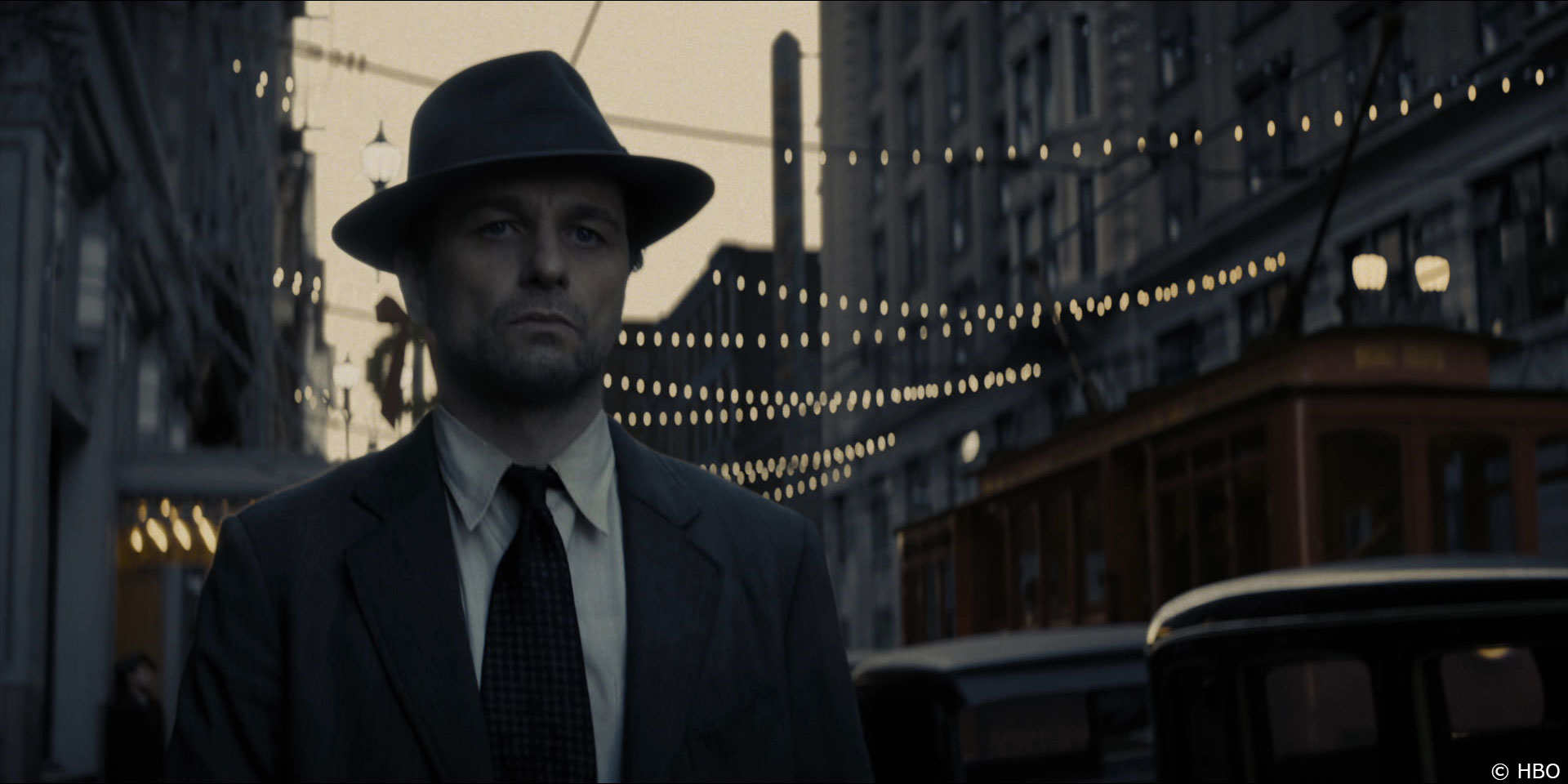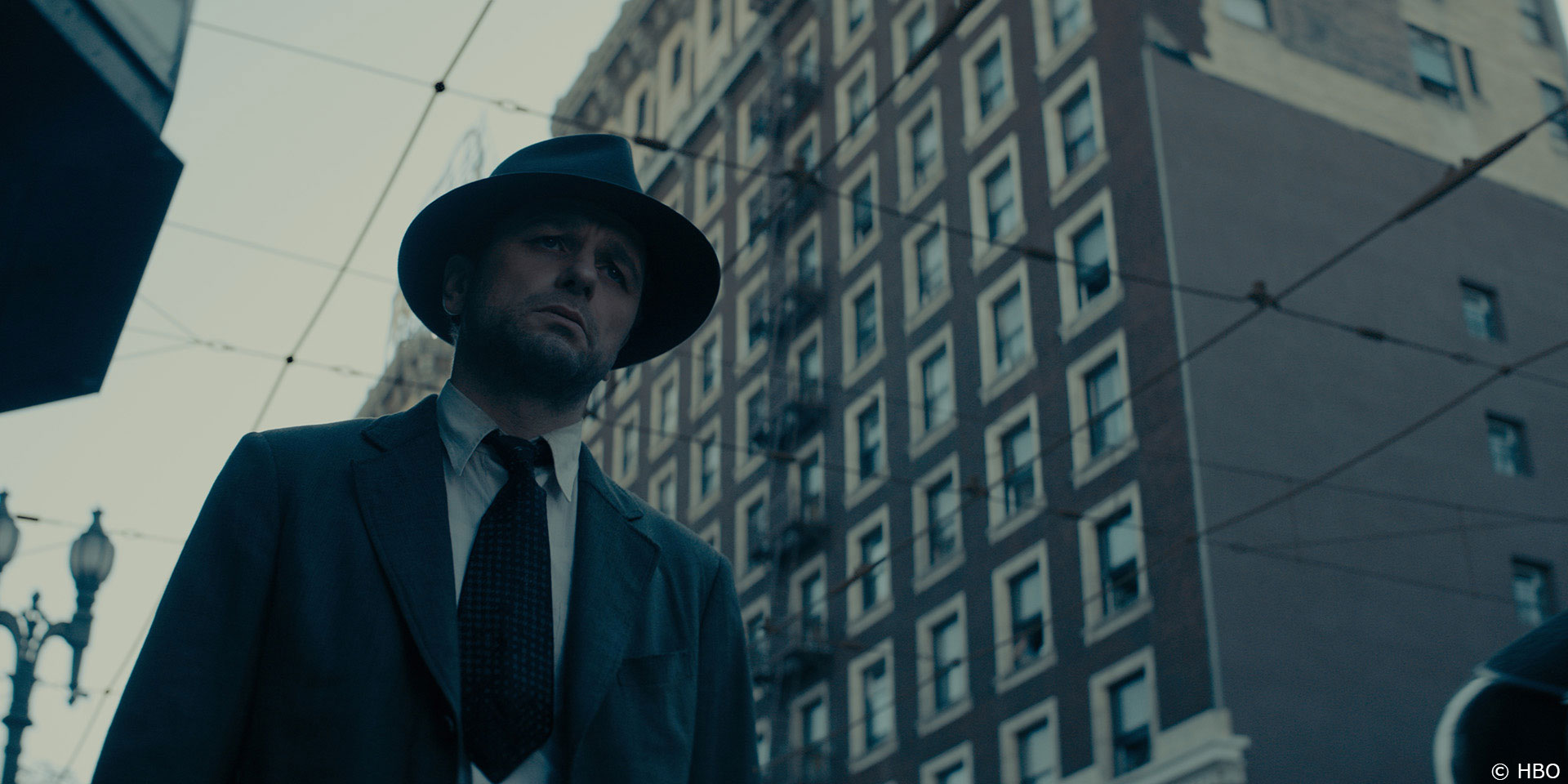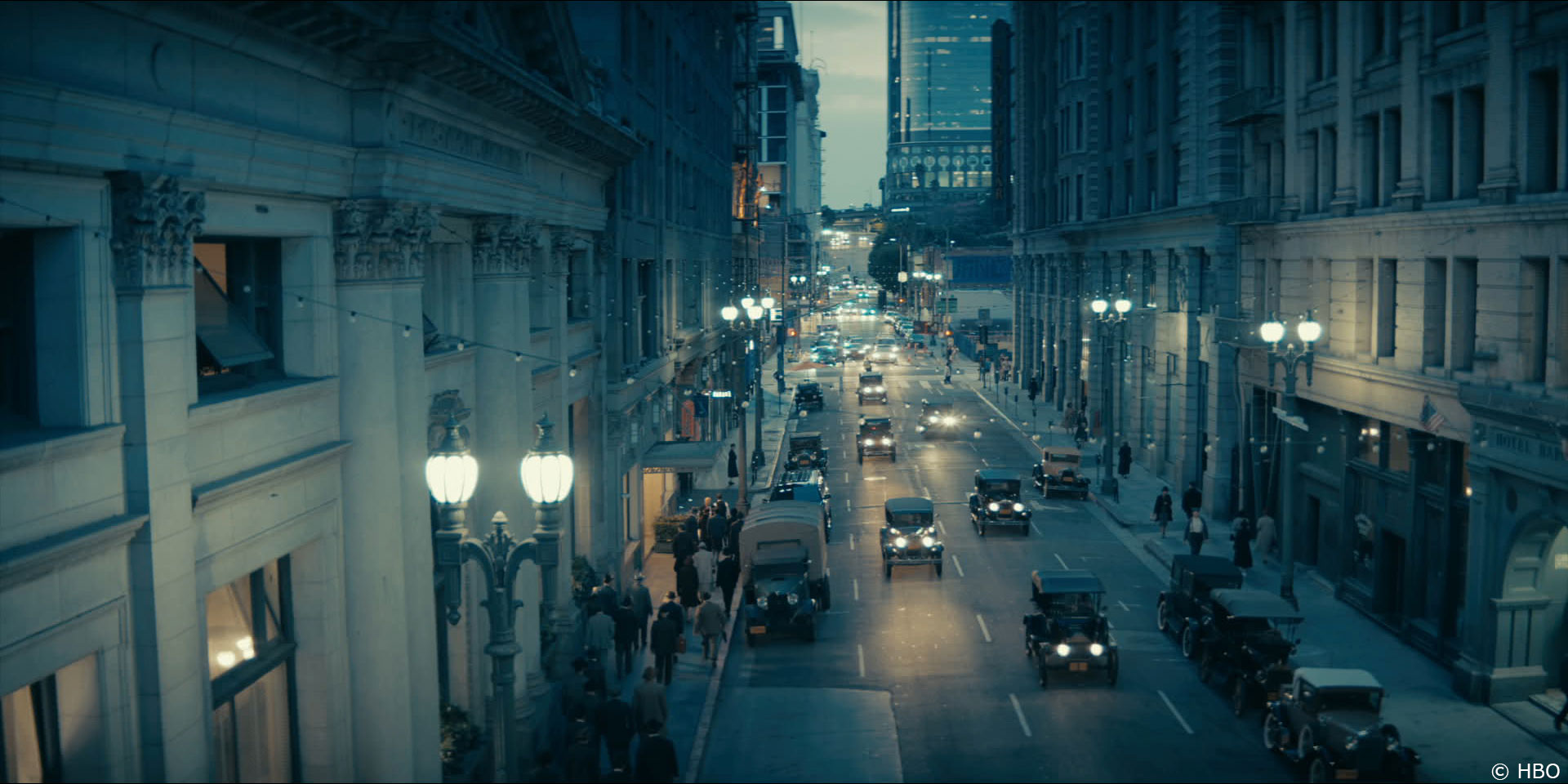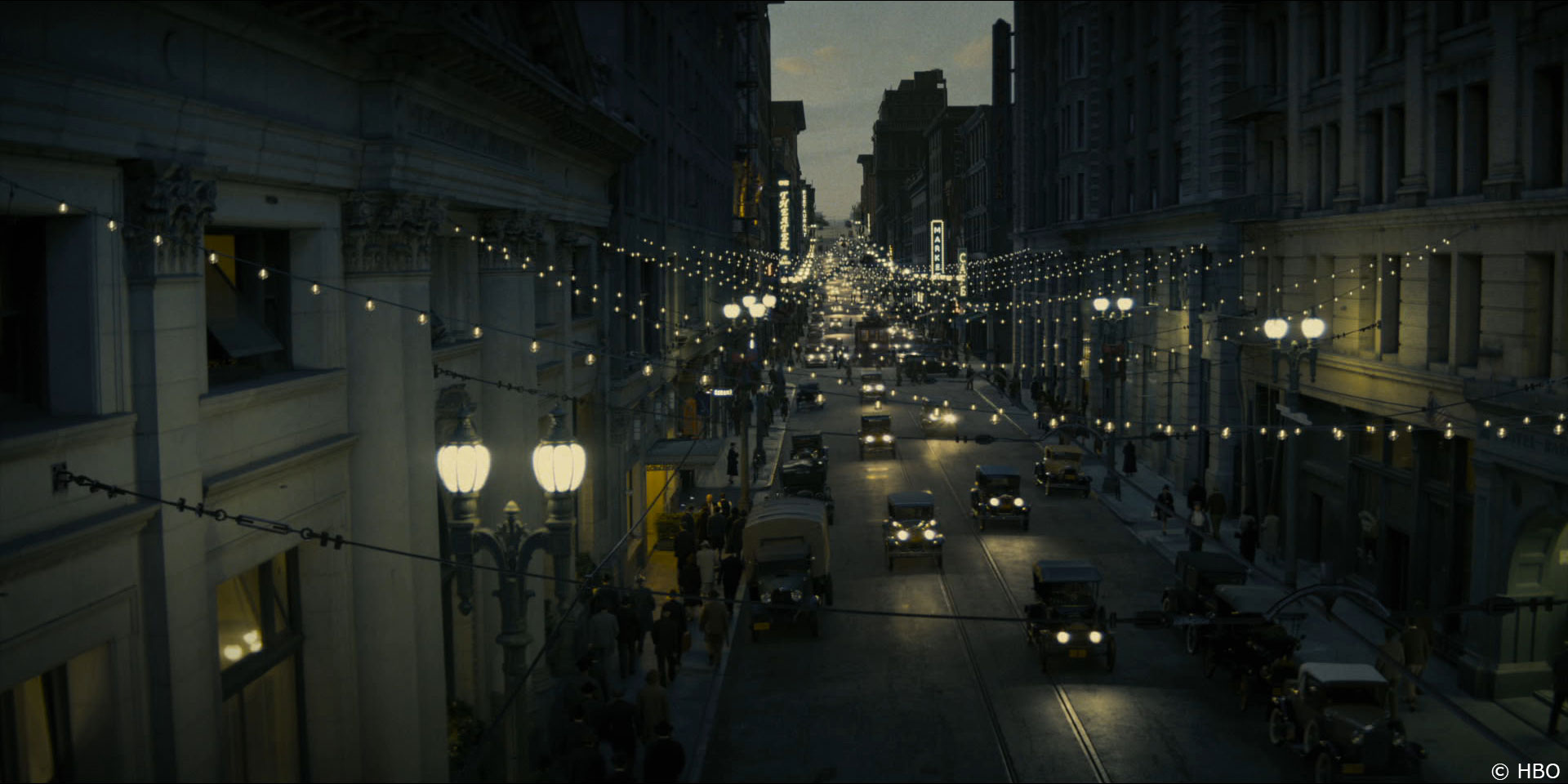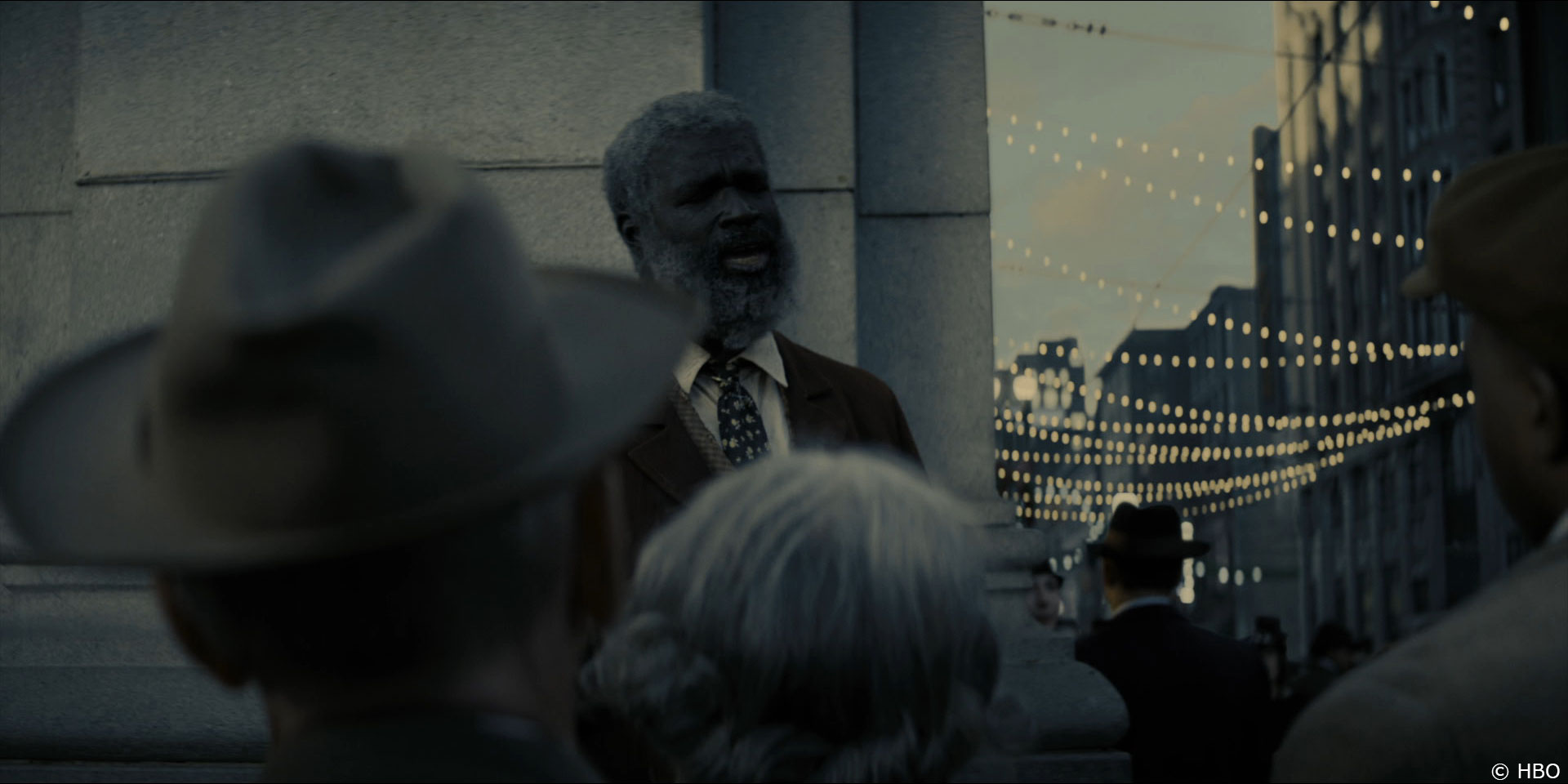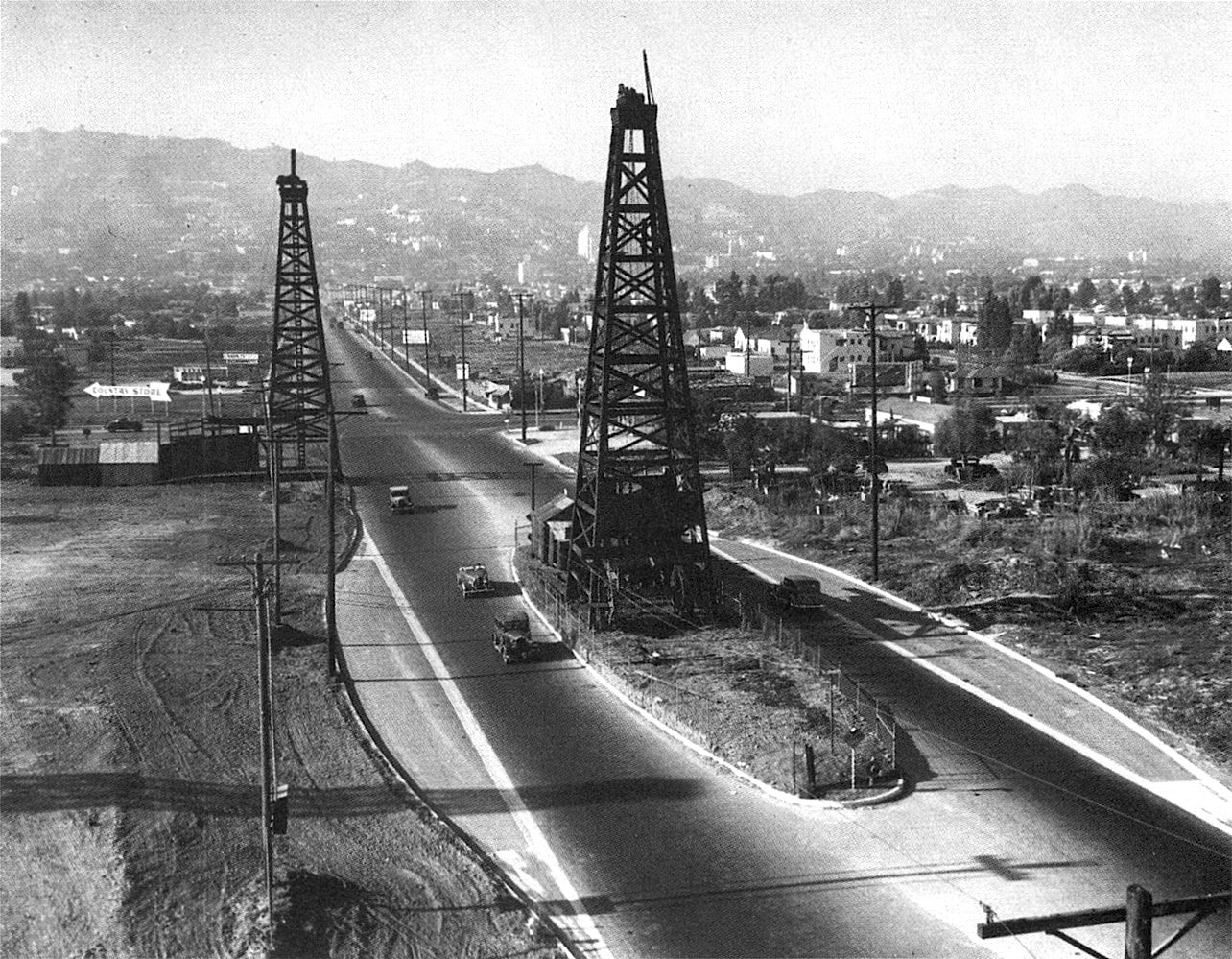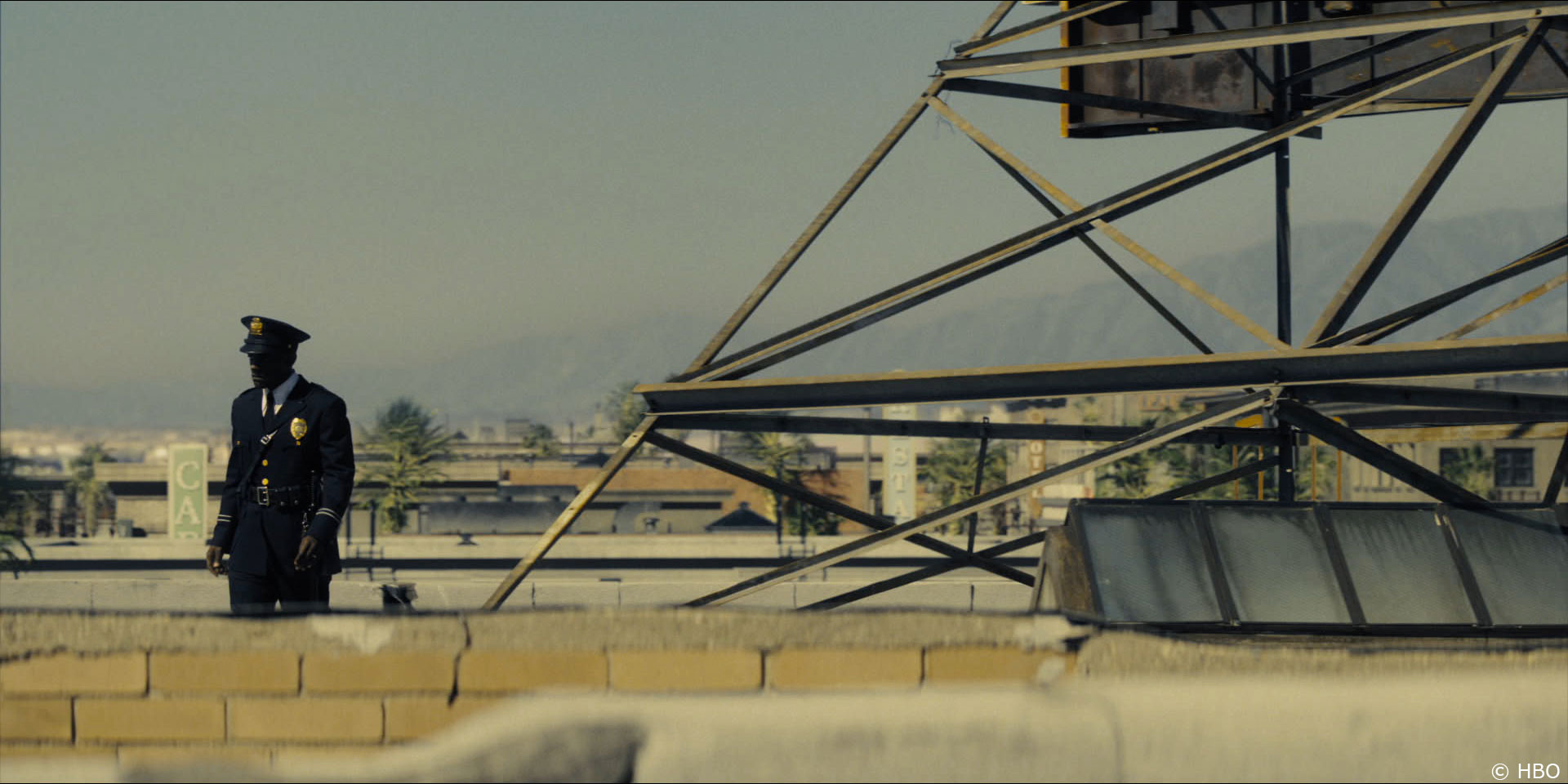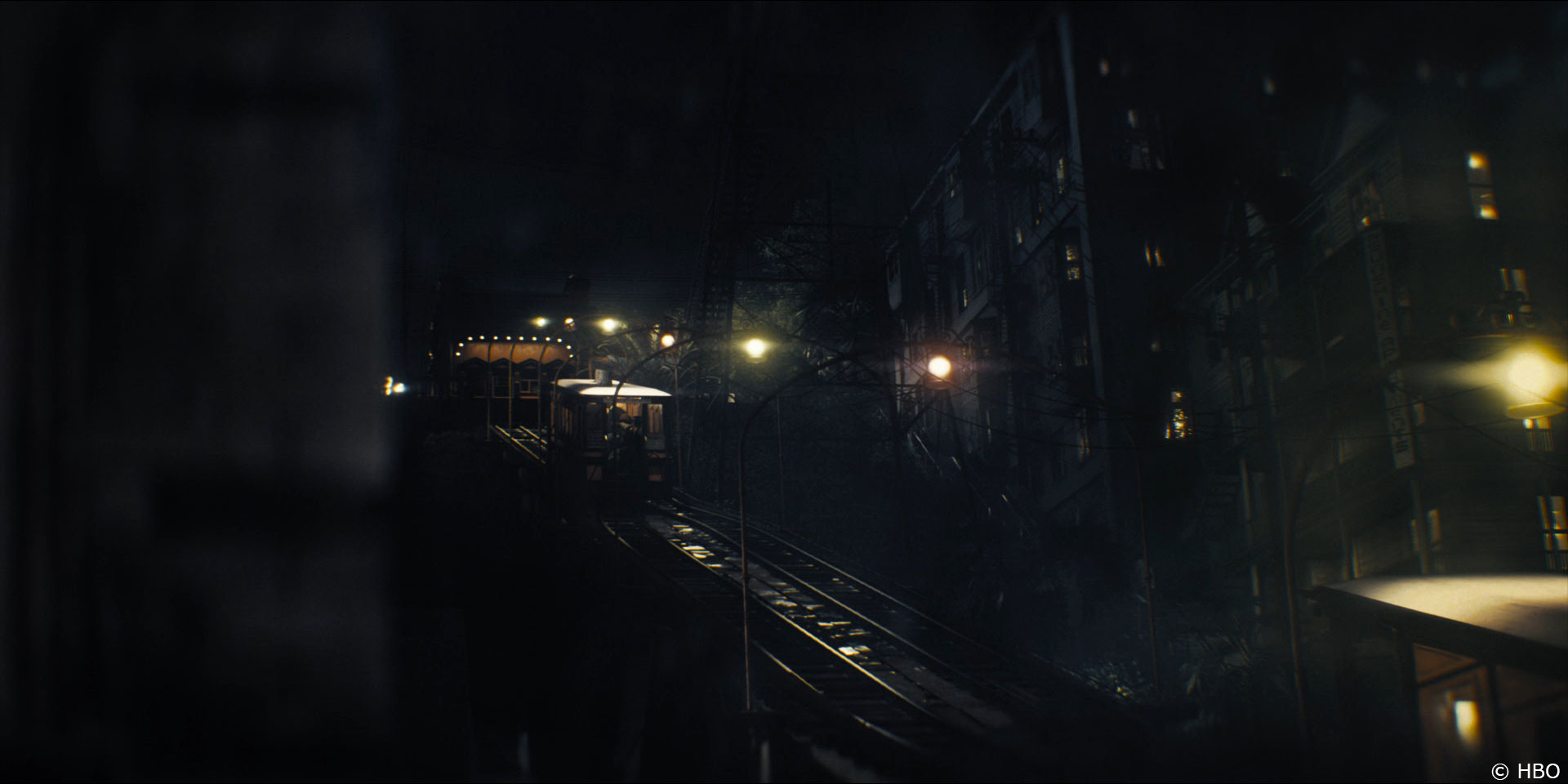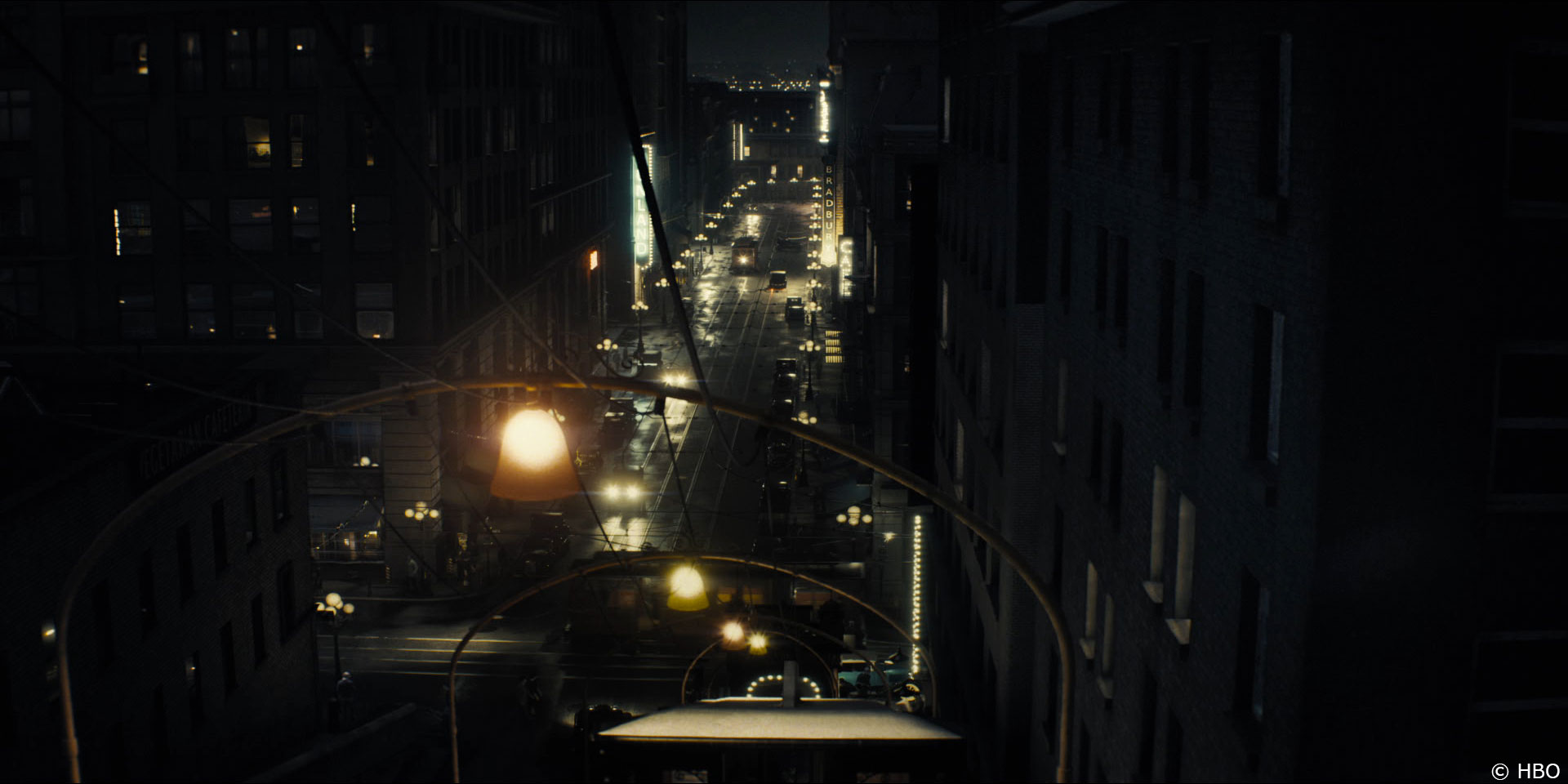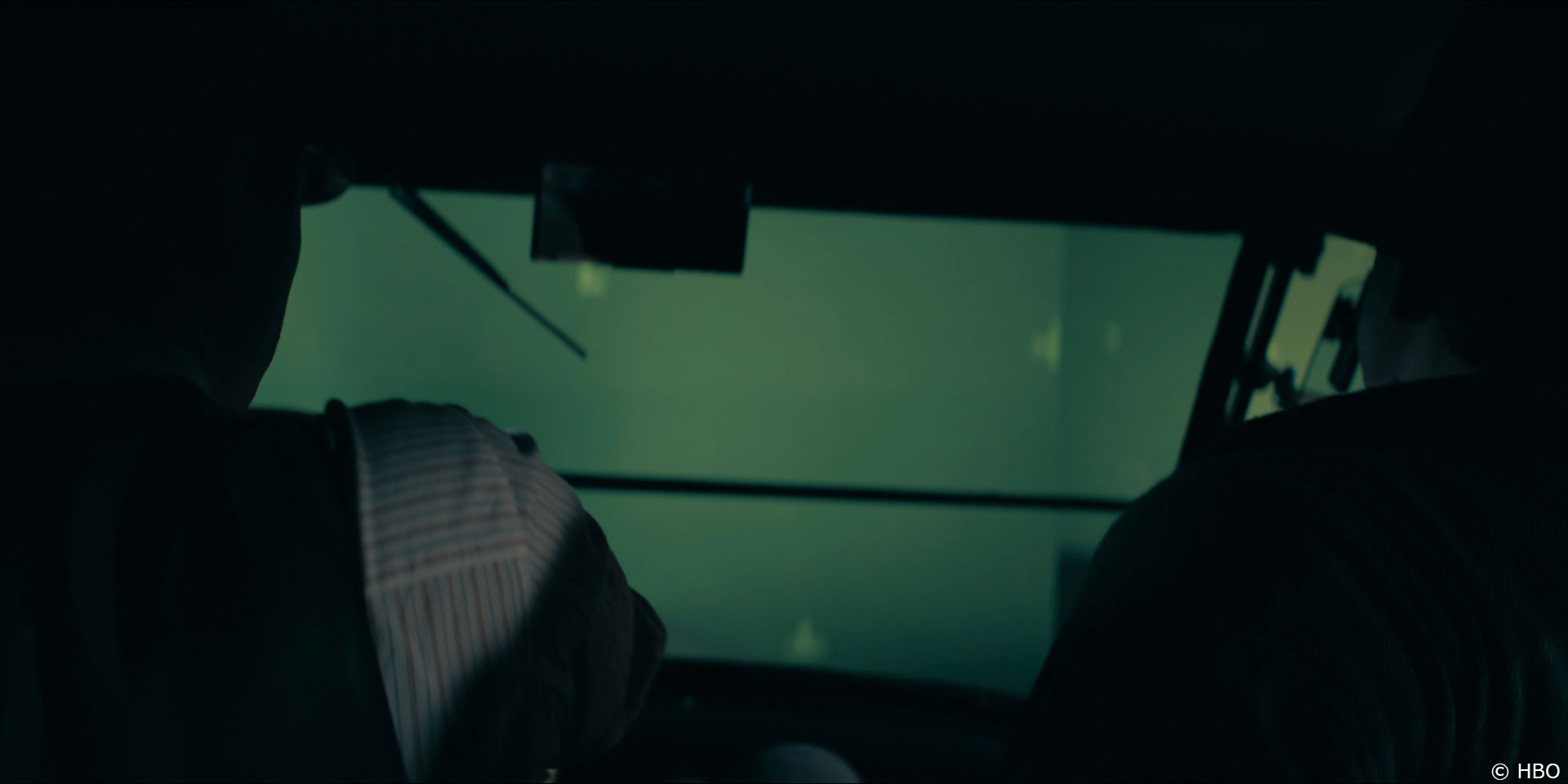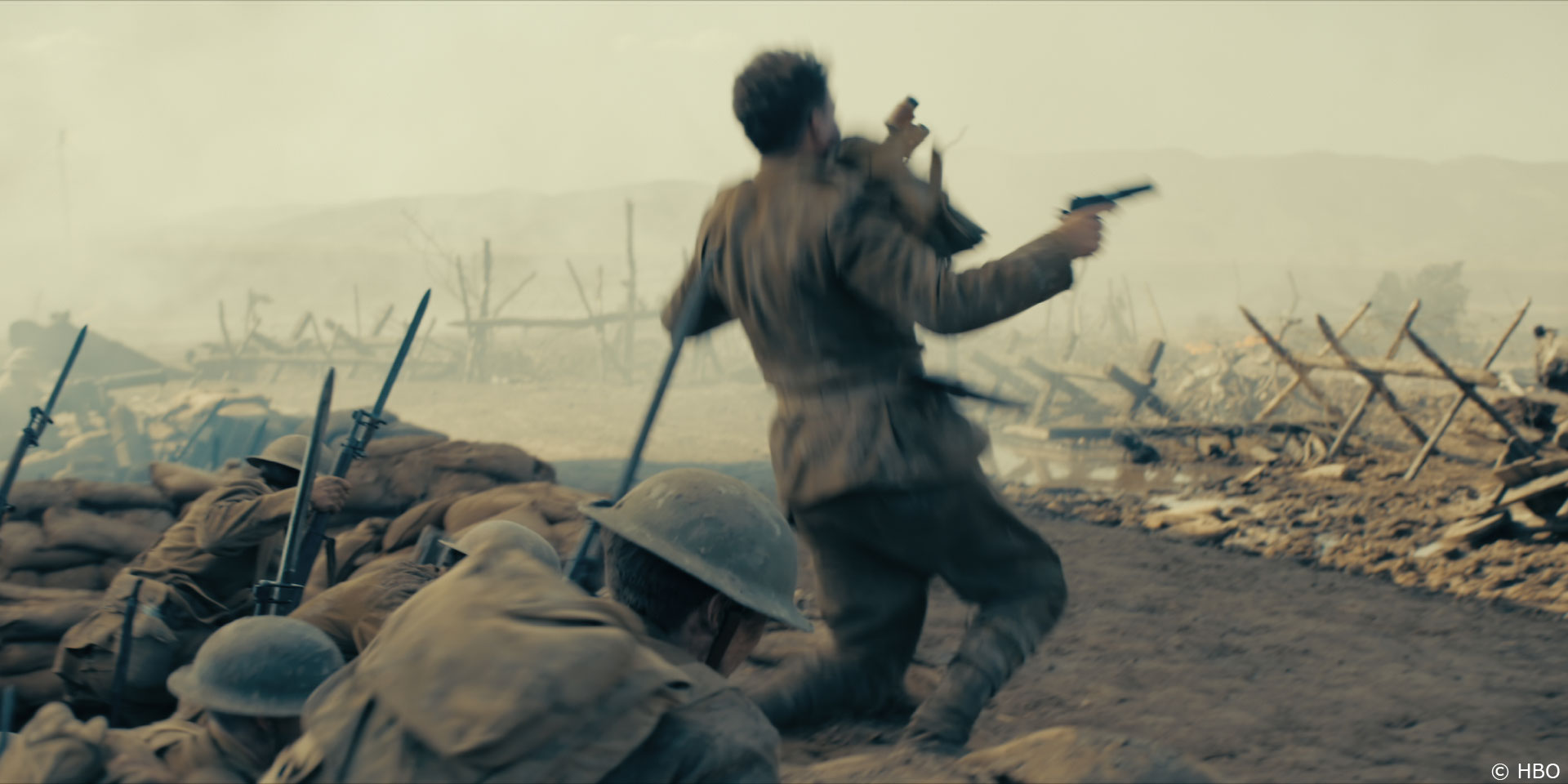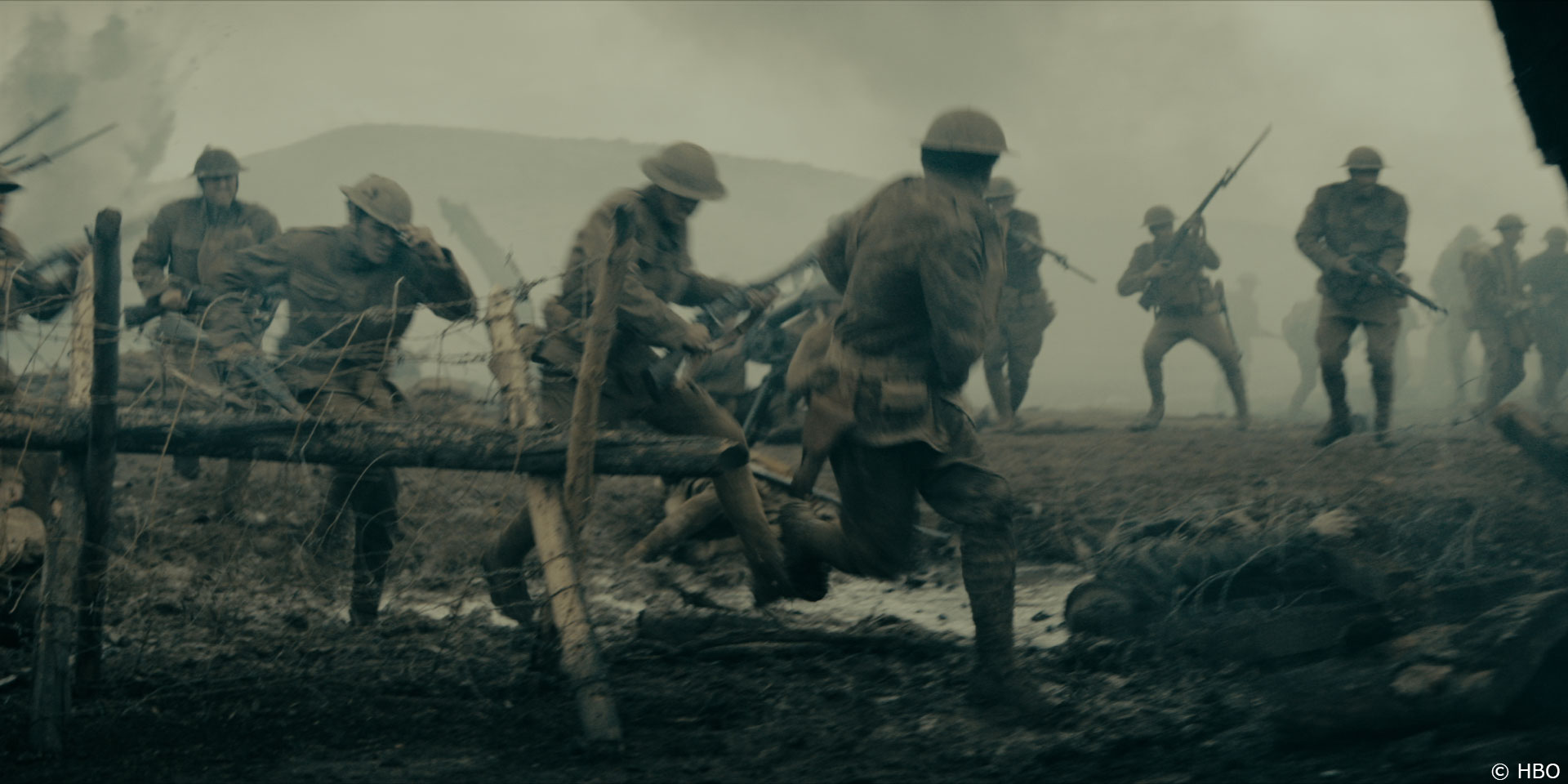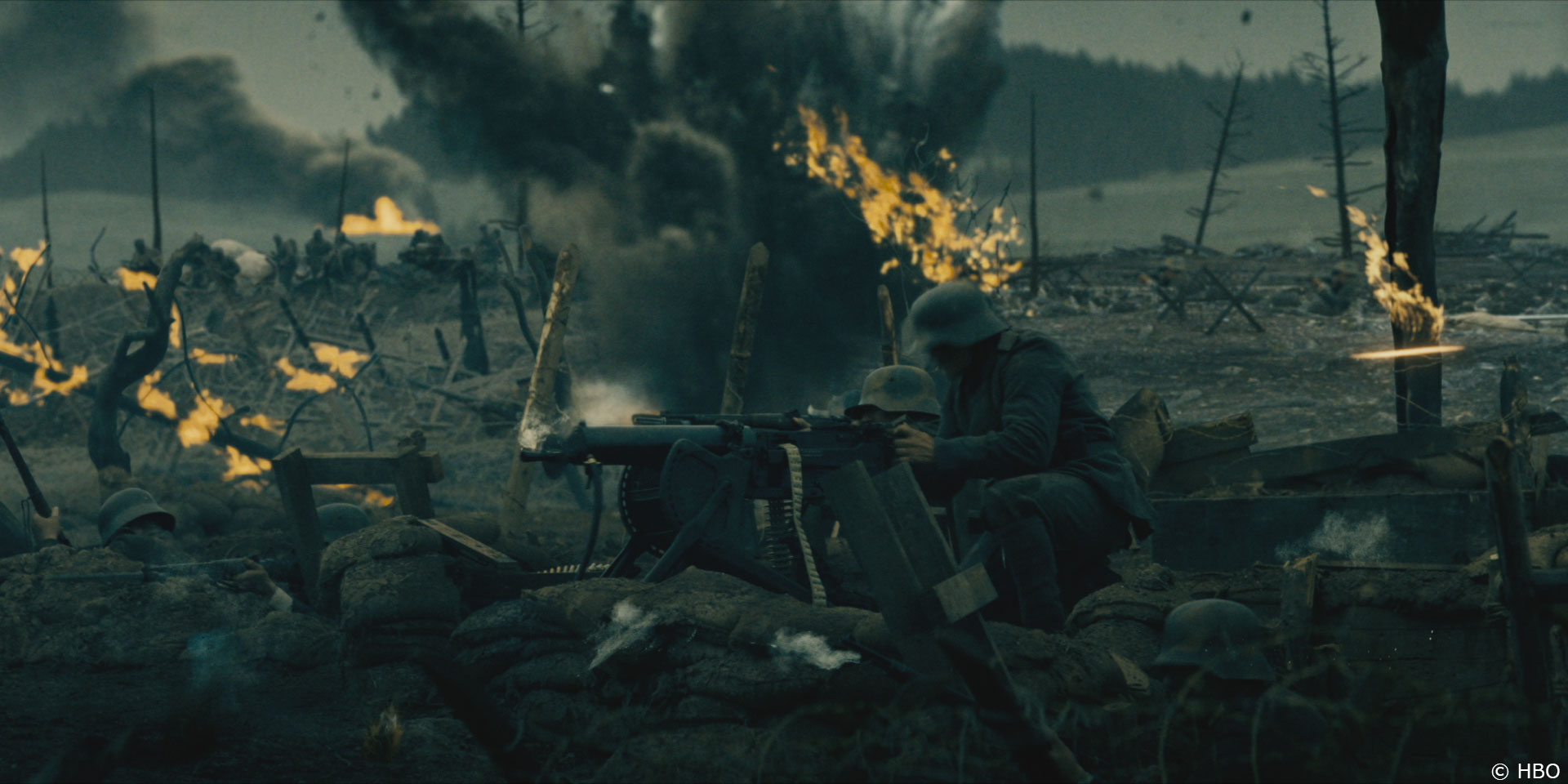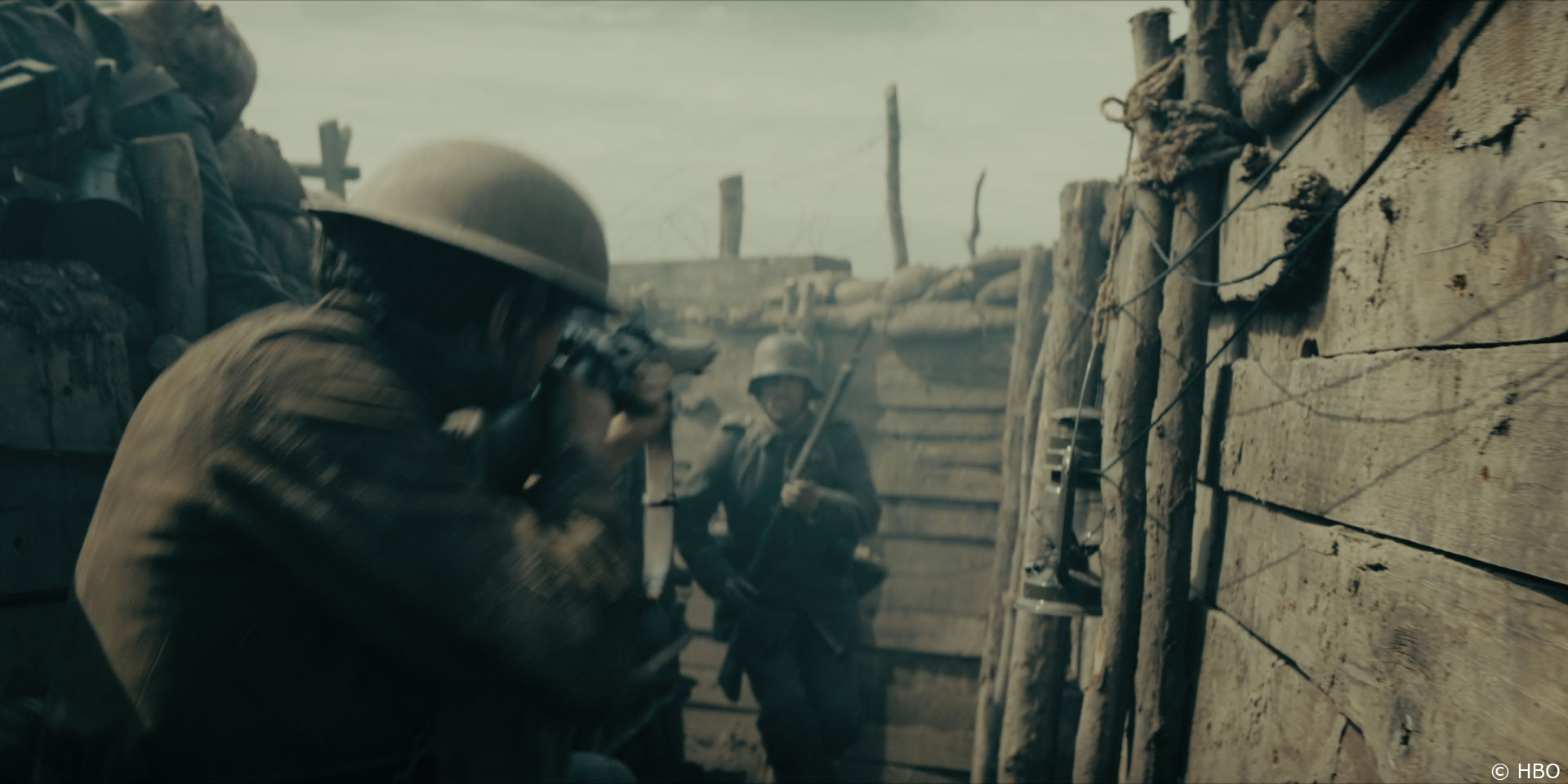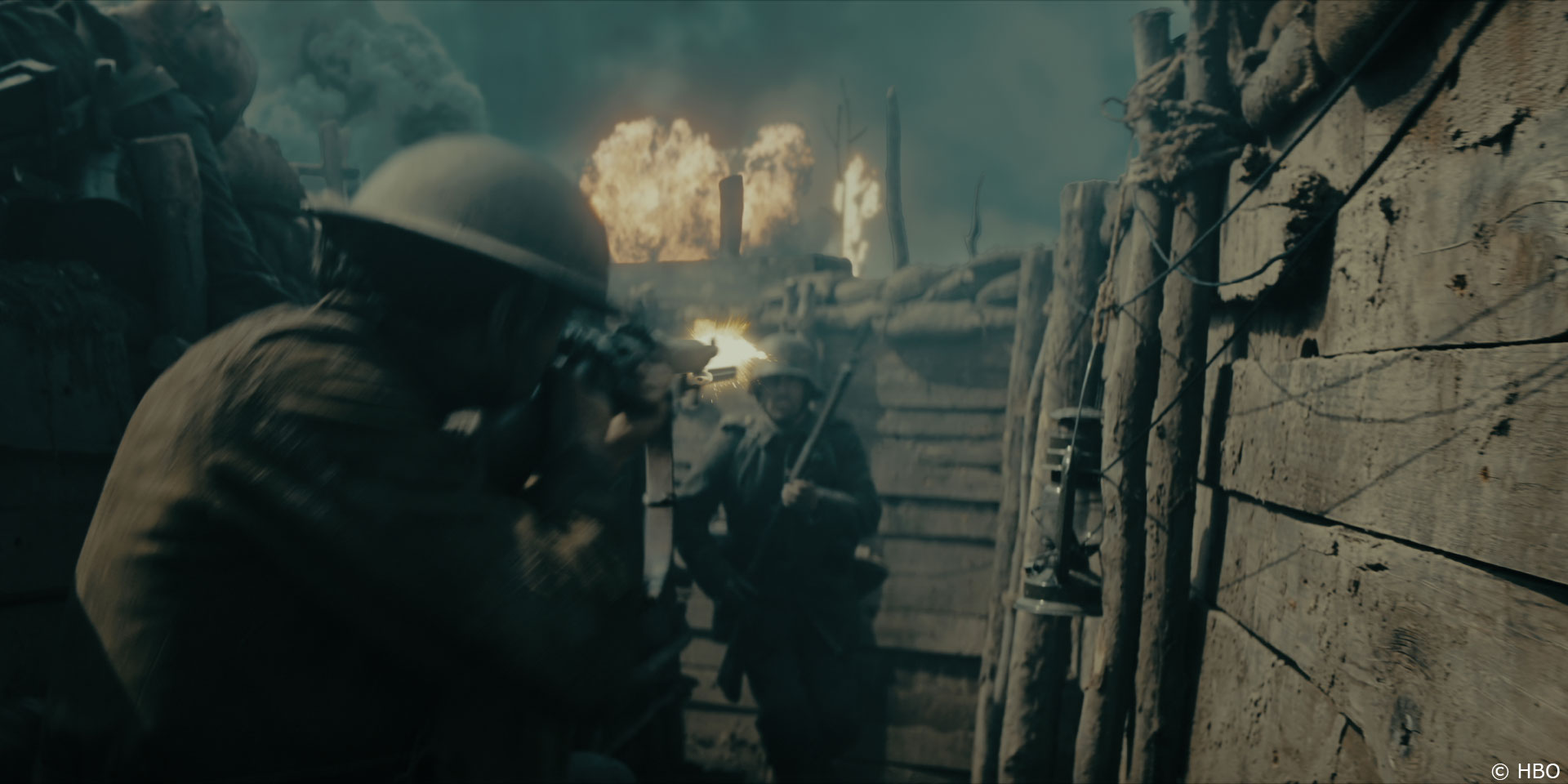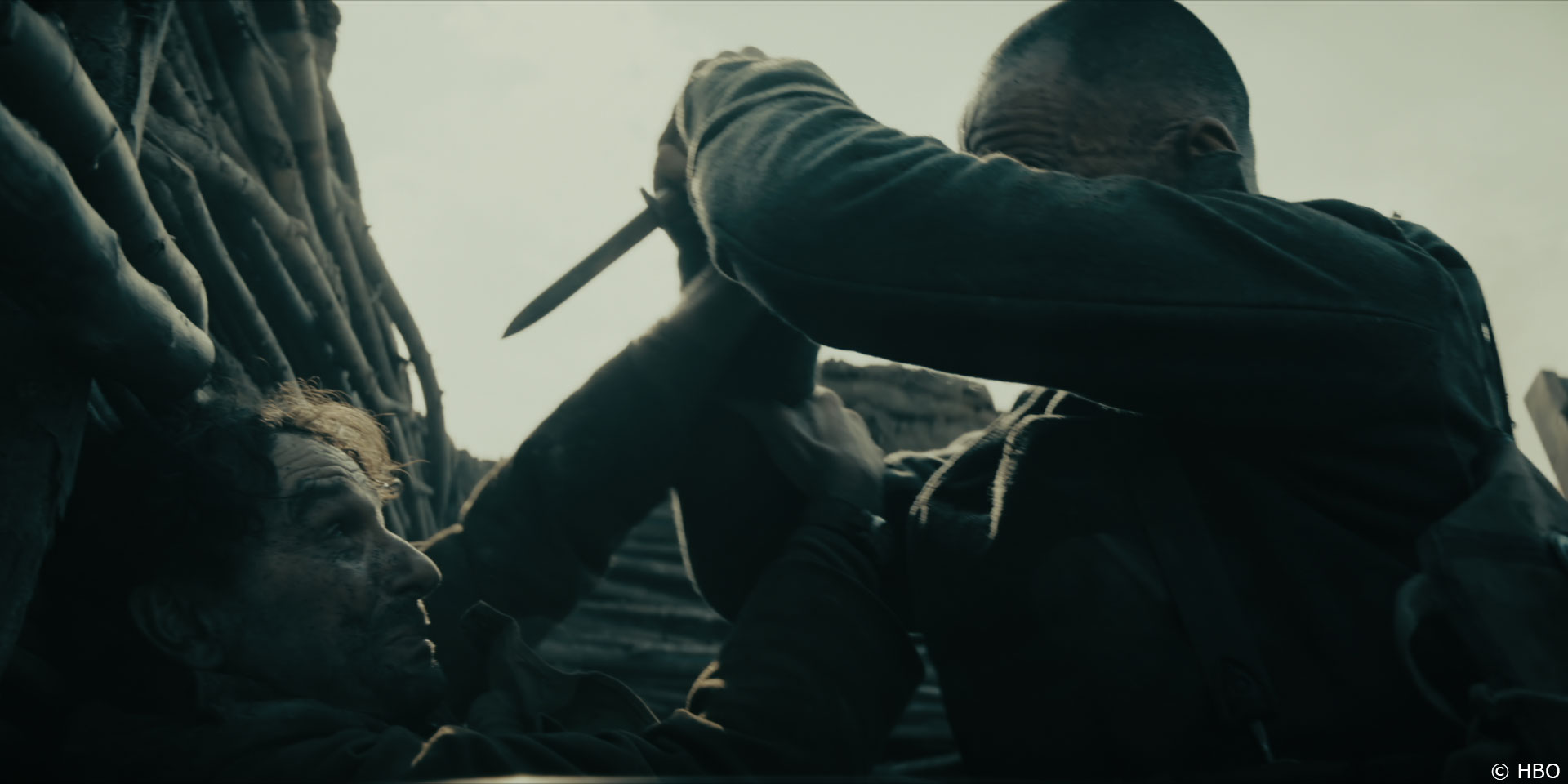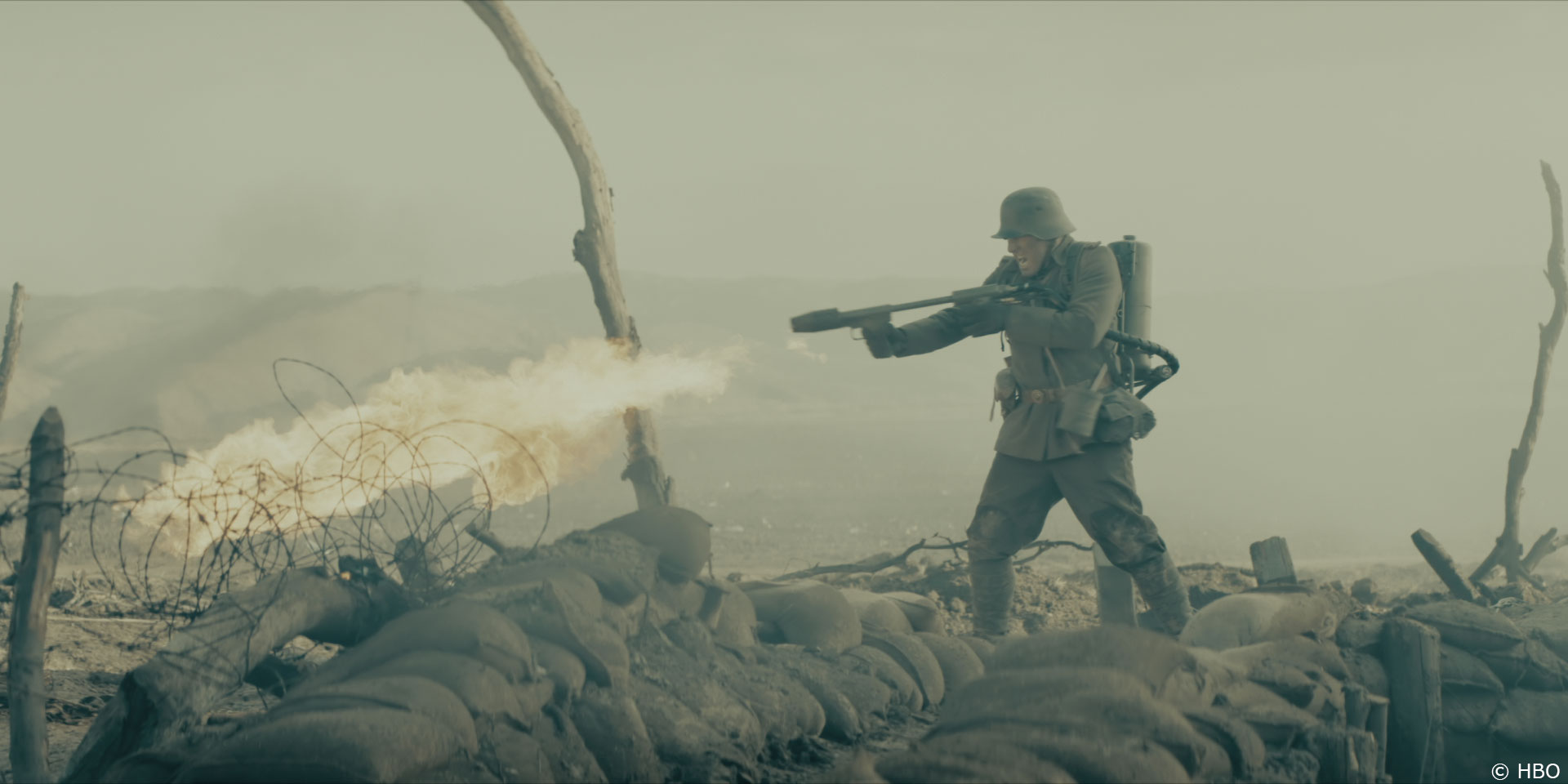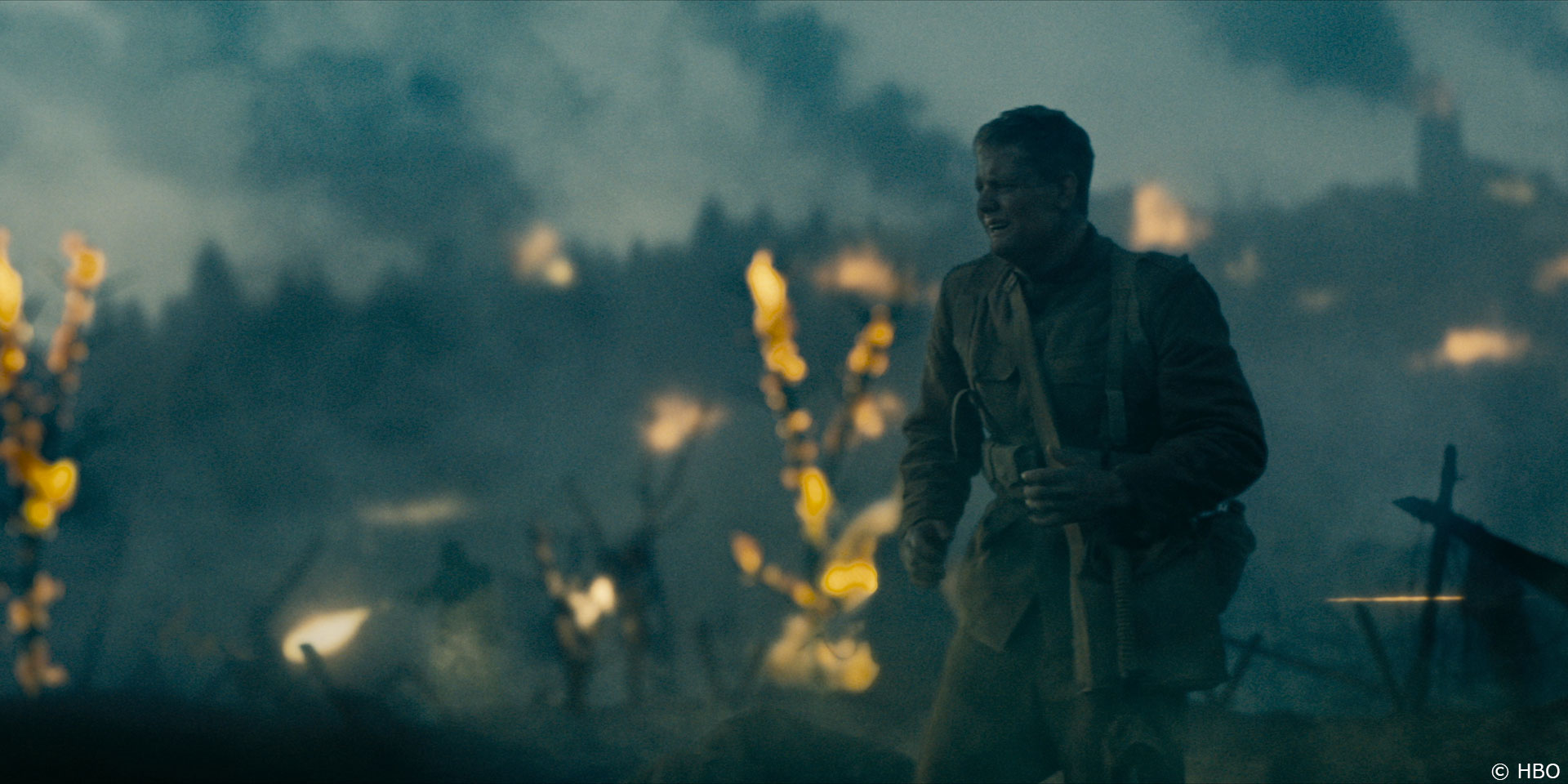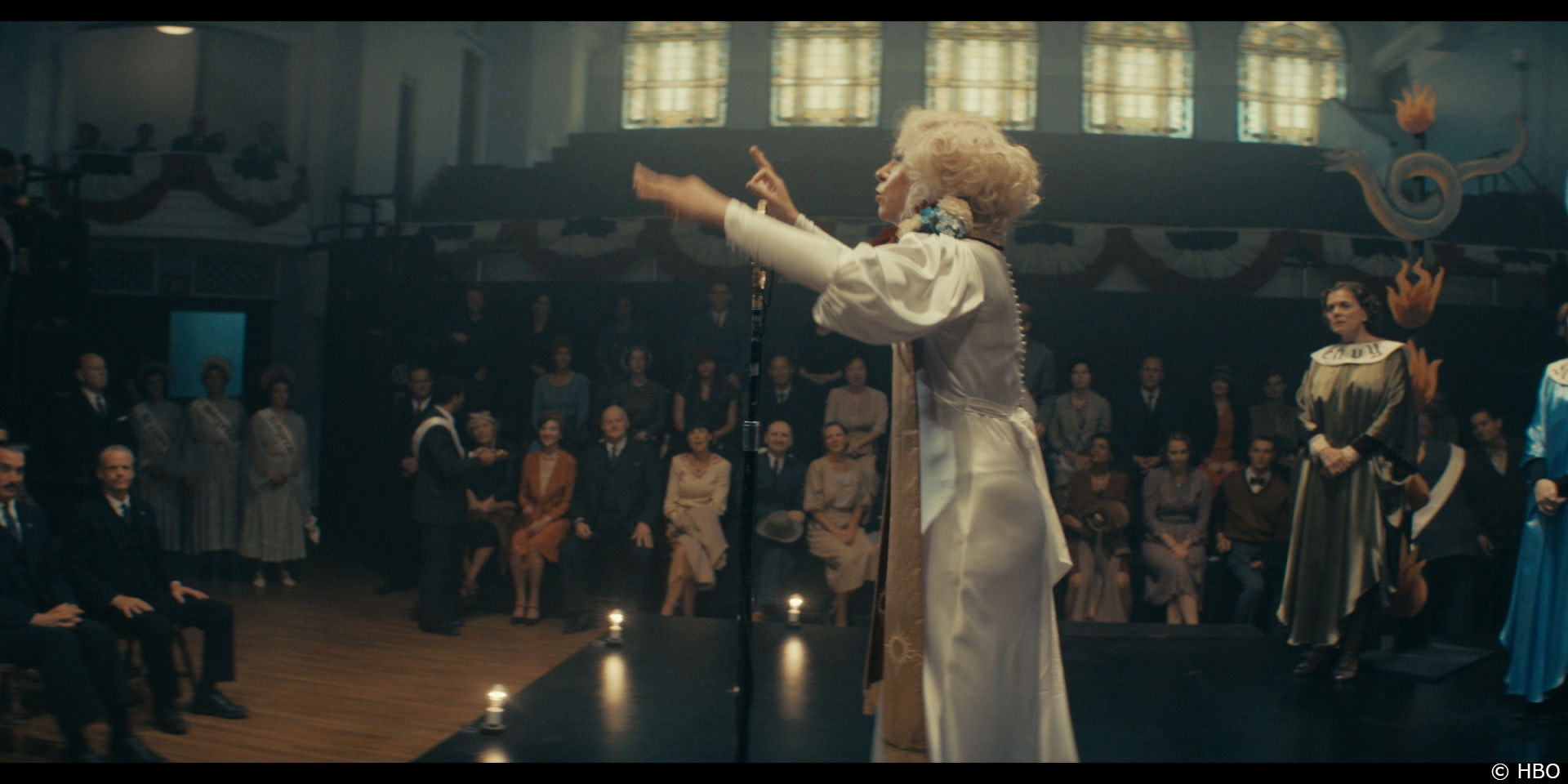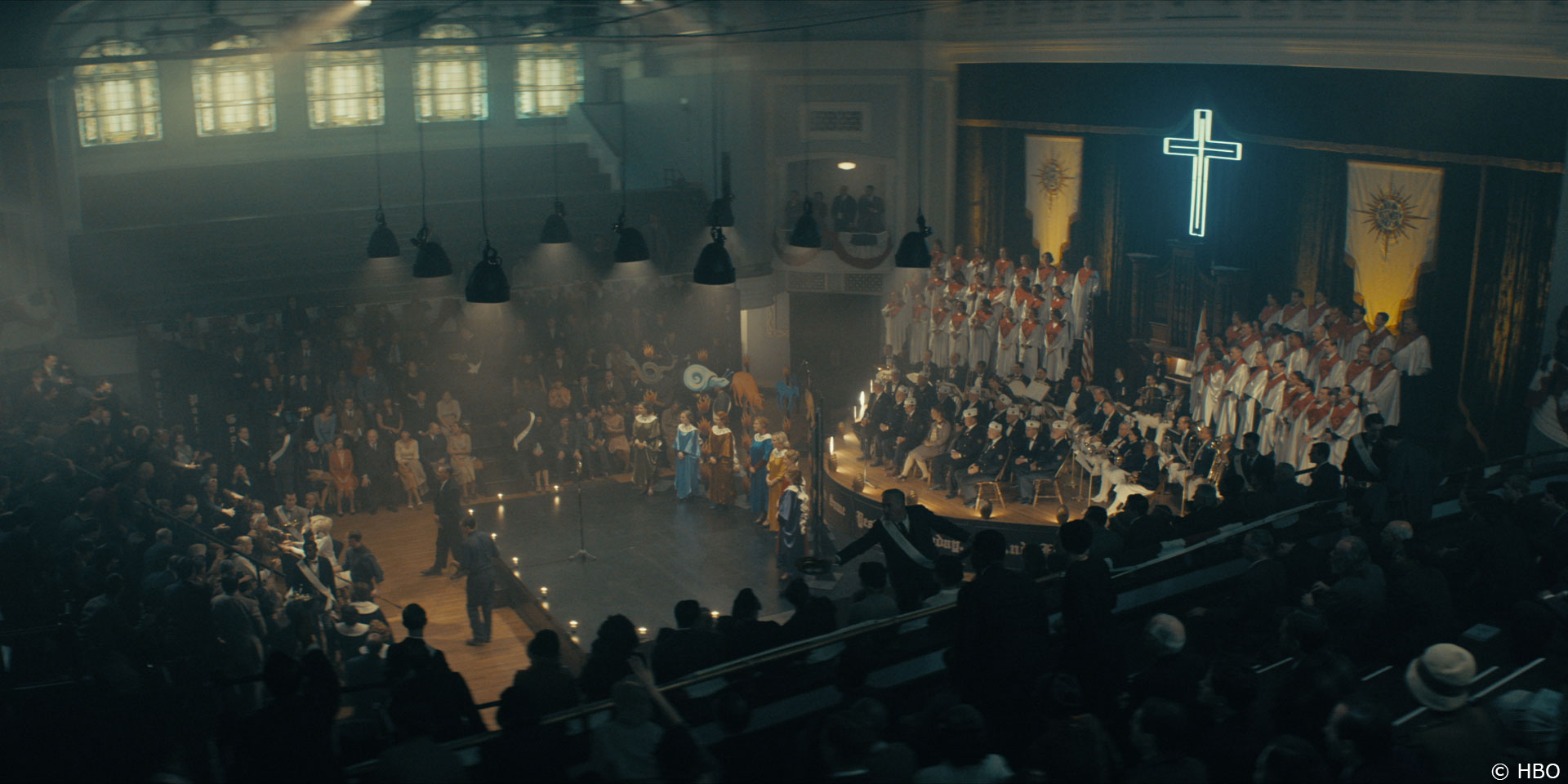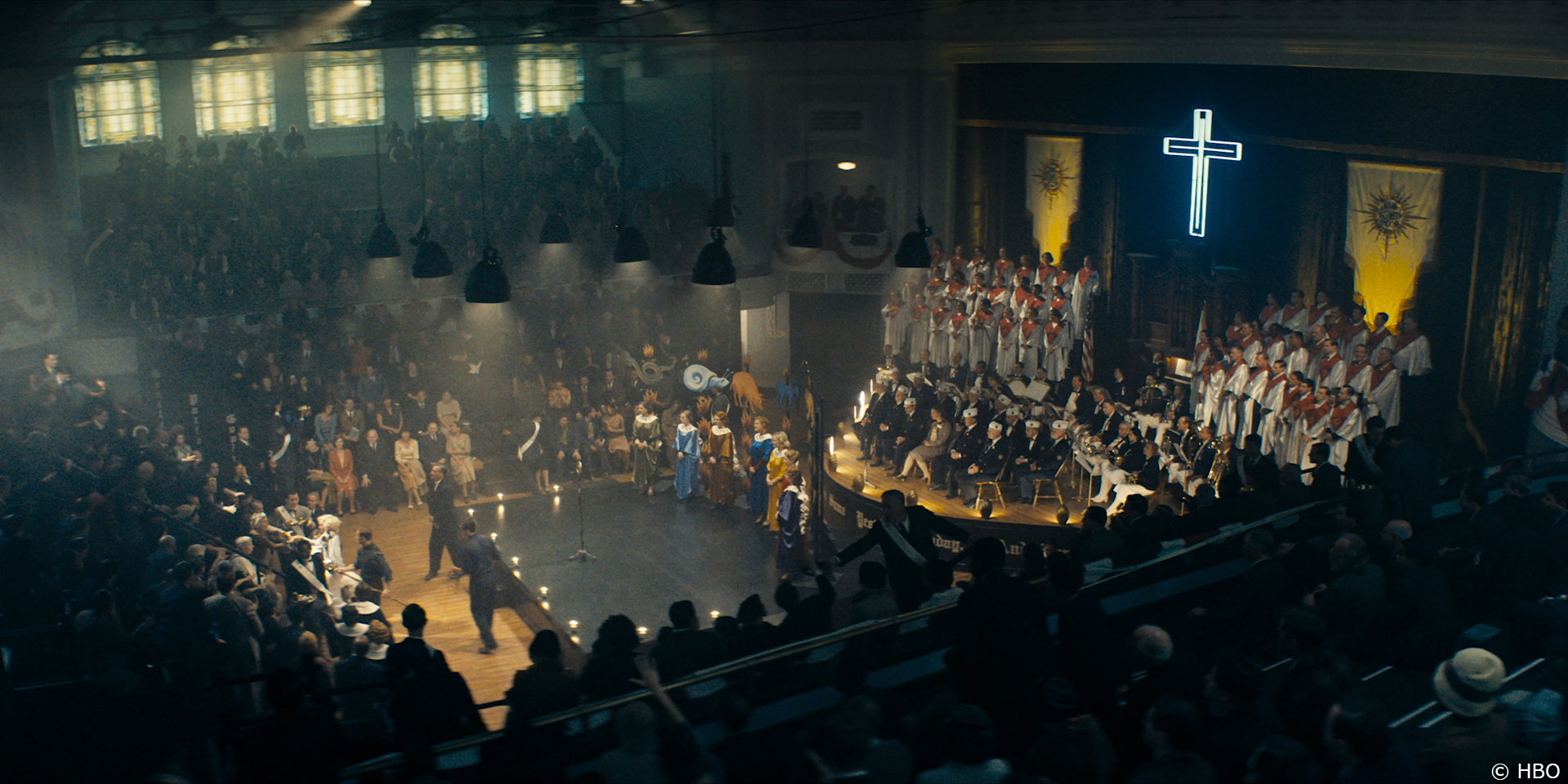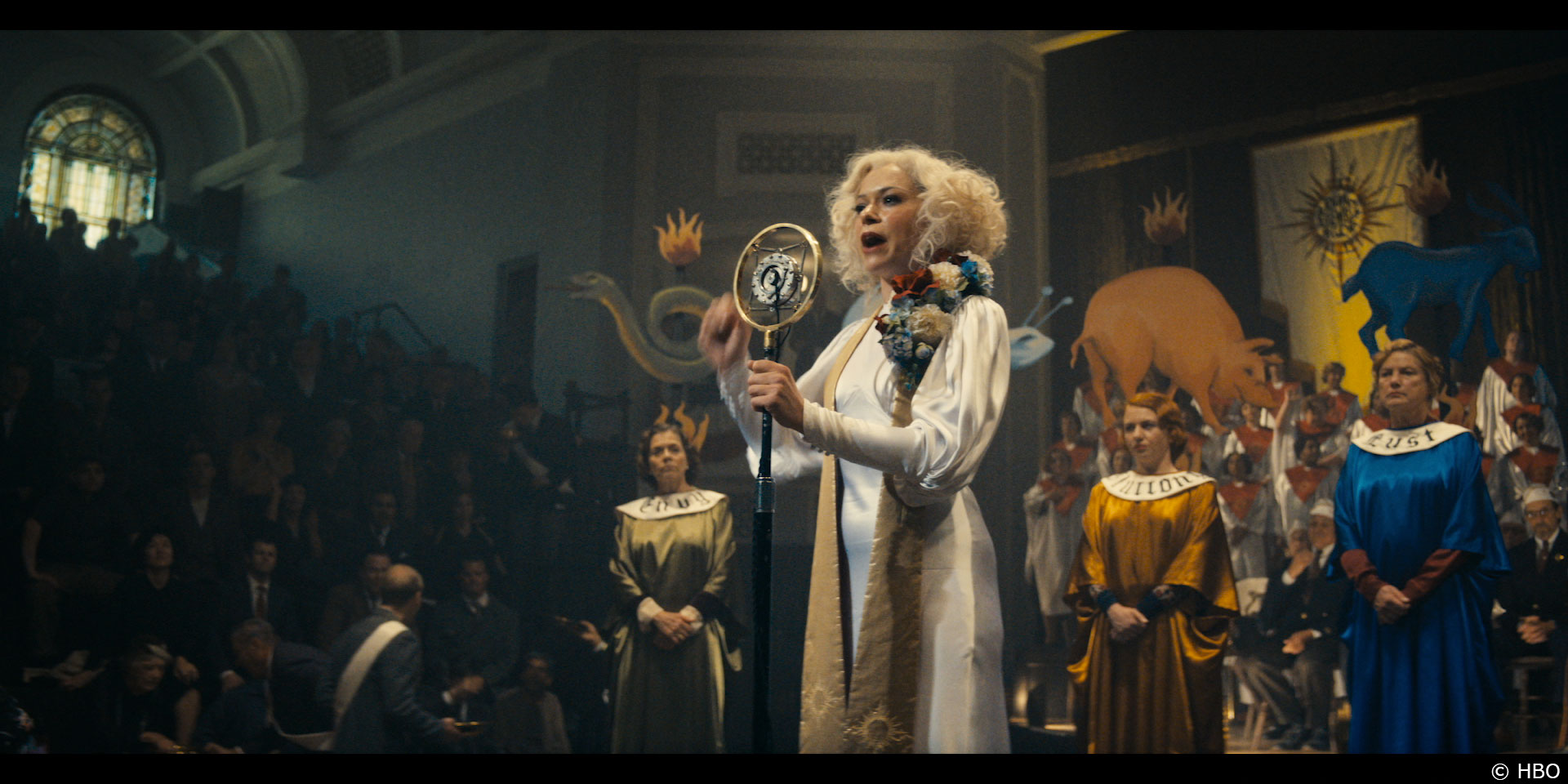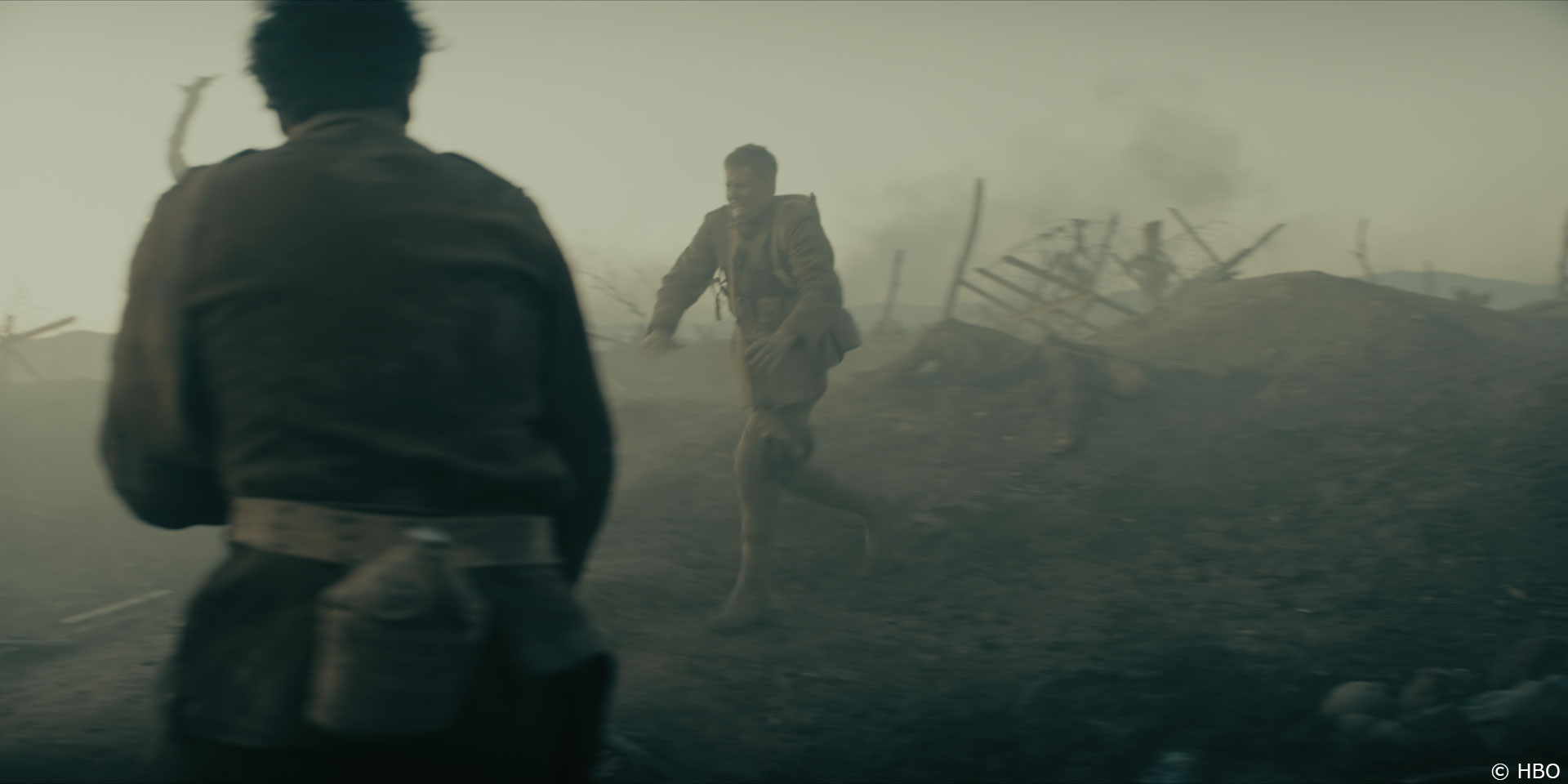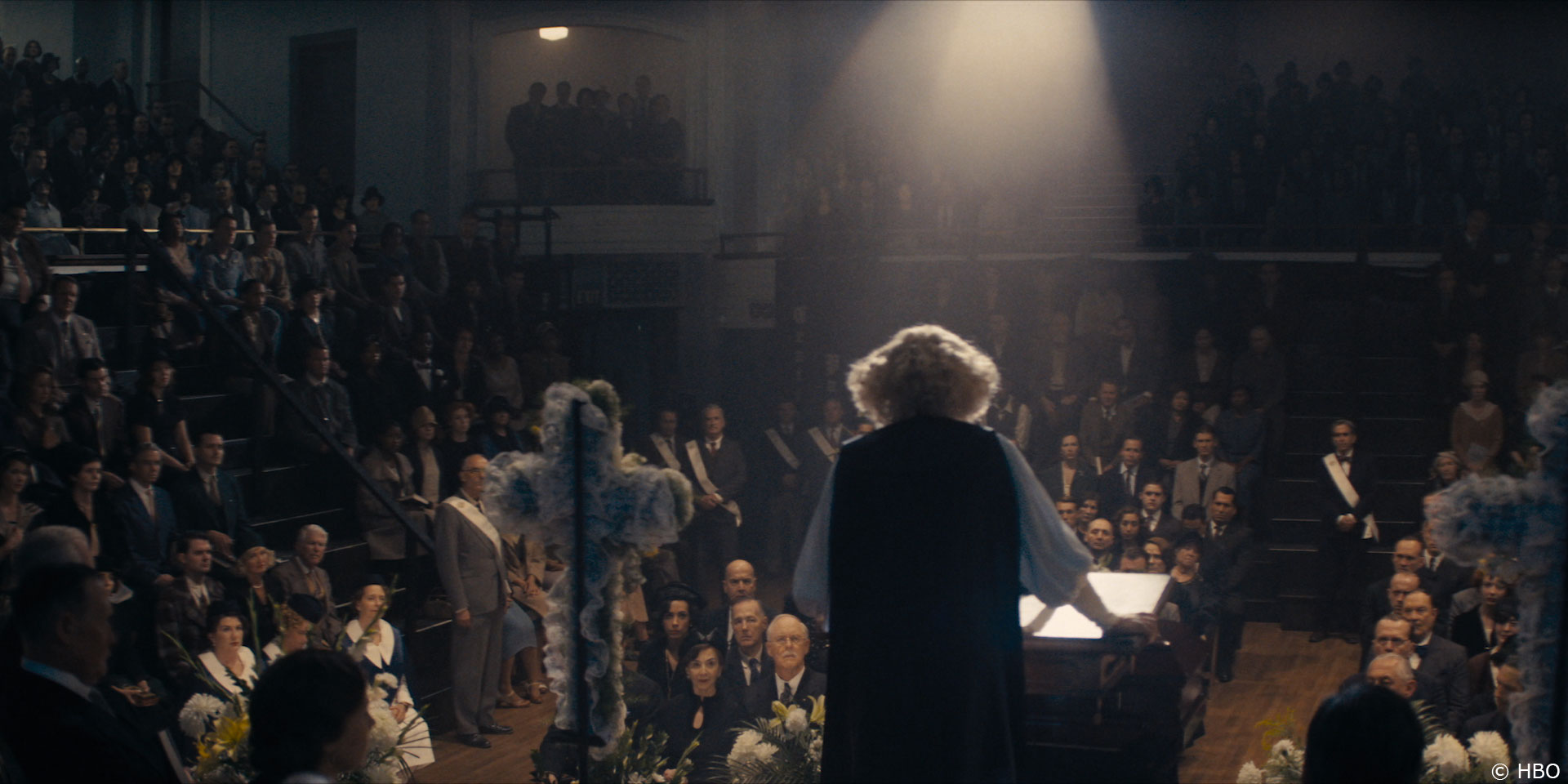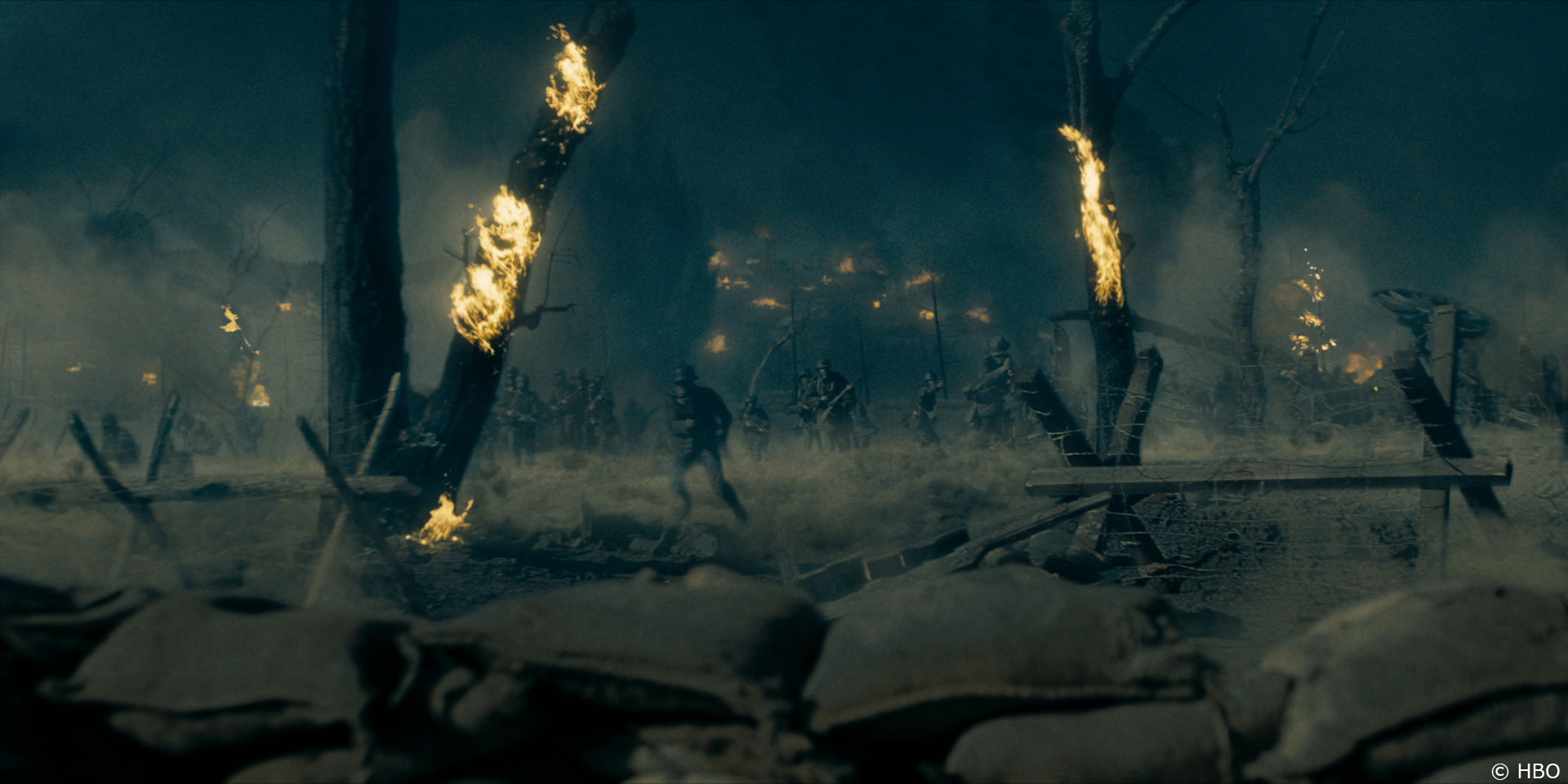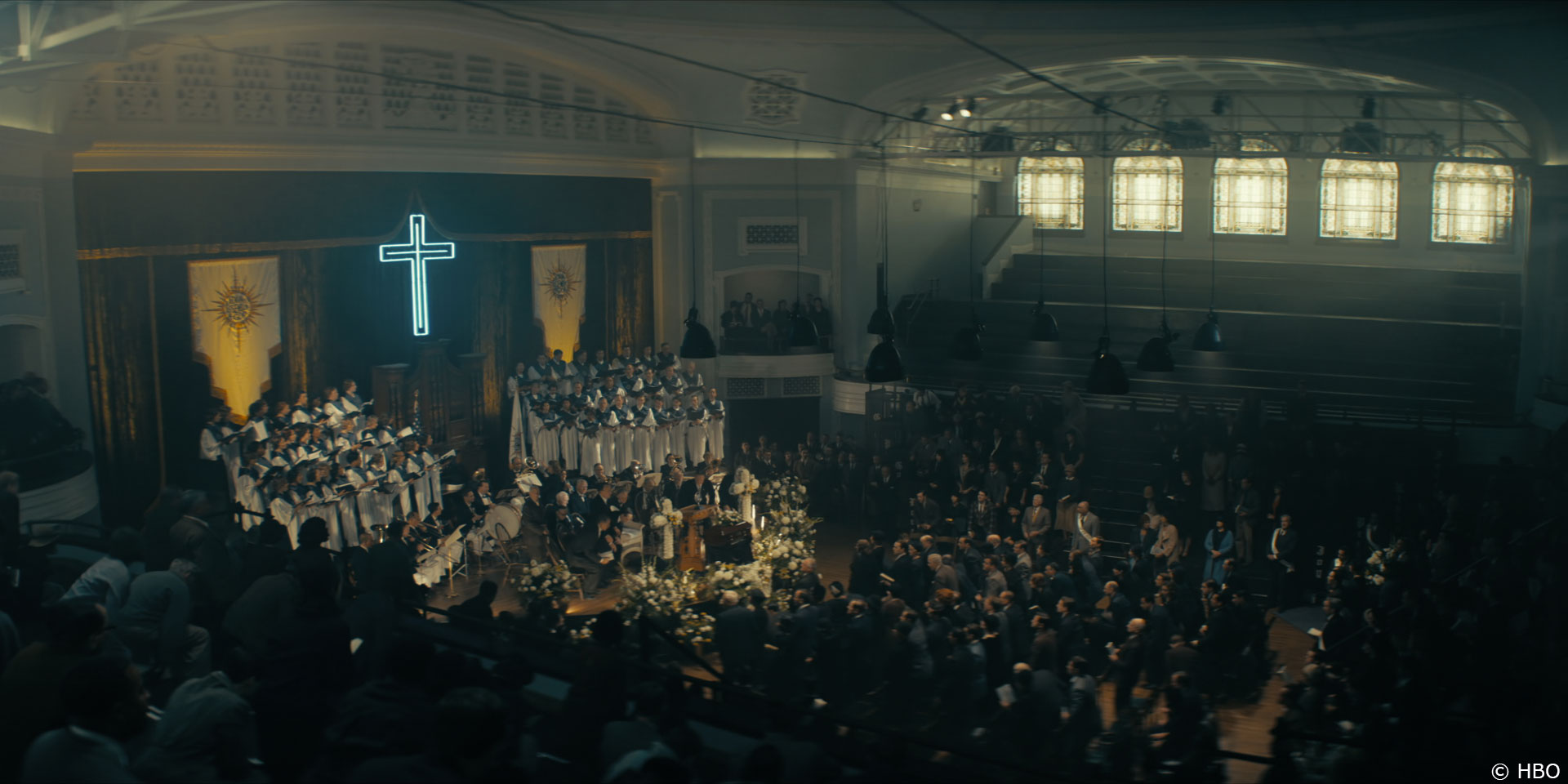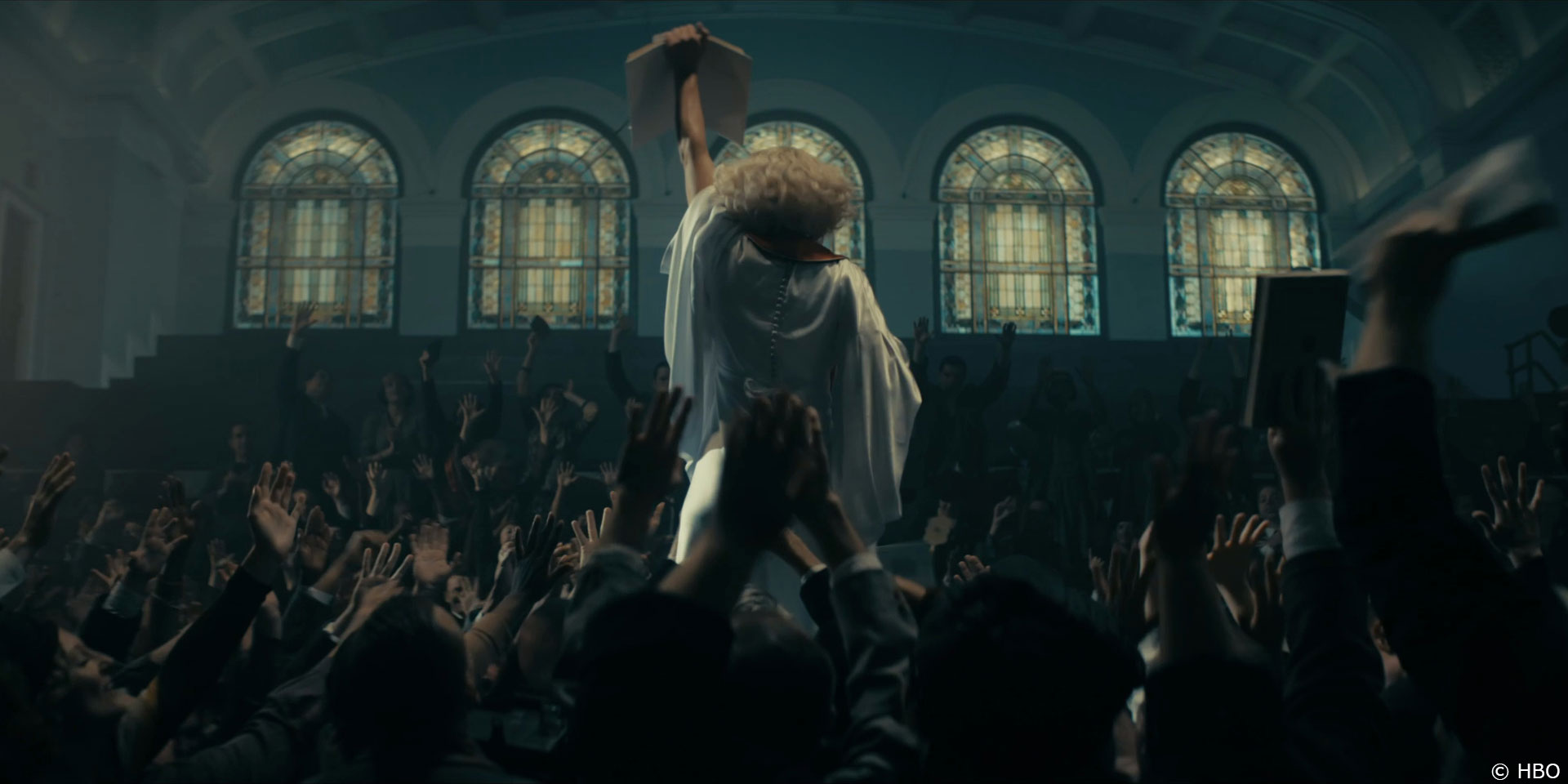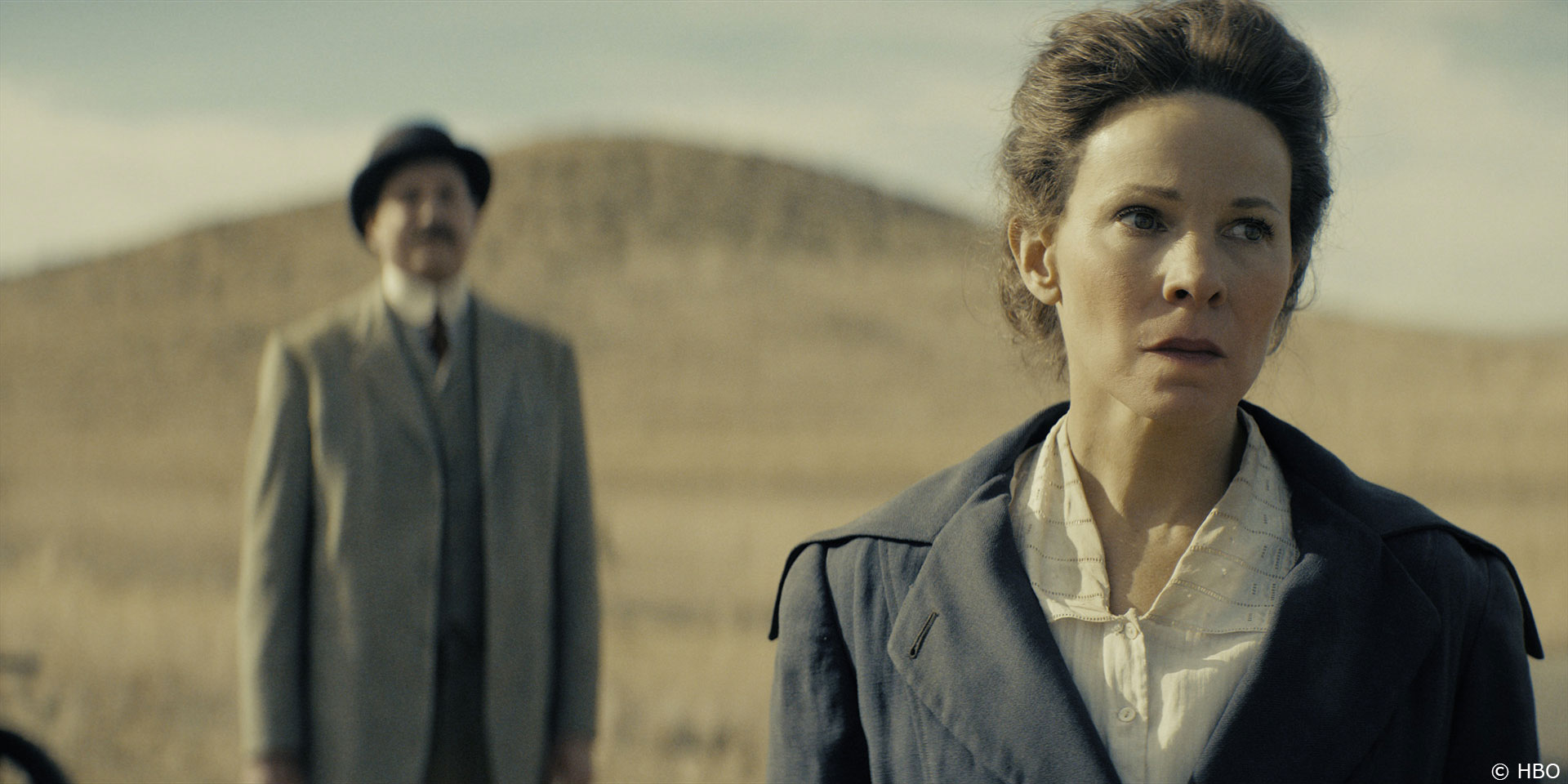Last year, Justin Ball explained his work on THE CURRENT WAR. He then worked on NIGHT SCHOOL, THE OA PART II and UNHINGED.
How did you get involved on this show?
Initially I was contacted by the Co-EP Aida Rodgers when the scripts were first coming across her desk. I had just worked with Aida on THE OA Part II and we were discussing how to pull off 1930’s LA in the current state of the city. Los Angles has changed so much in the last 90 years. You can find slivers that are still period, but they are few and far between. I was asked to join the show at the time, but had to pass due to timing as I was just finishing THE OA in Los Angeles and needed to take a break back home in Atlanta. I consulted on it briefly in pre-pre-production.
How was the collaboration with the showrunners and the directors?
Fantastic! When I rejoined the project in October I was joining a team of familiar faces from previous shows. From Aida and her production team from when I was on THE OA, Pete Feldman from back on TRUE DETECTIVE Season 1, and Tim Van Patten from BOARDWALK EMPIRE. It as a bit of a who’s-who of my projects from the past decade. Deniz was fantastic as well. Her episodes were a little pared down for our work, so it was pretty straightforward to just let her shoot what she wanted and discussed her creative desires. A member of my team was always on hand to help guide her through any issues she came across, but as we were wrapping our heads around the look and history of the show, we rolled it into her episodes.
What was his expectations and approach about the visual effects?
Tim’s an old hat at this kind of world building. From THE PACIFIC to BOARDWALK EMPIRE to PERRY MASON, he knew what he was after and looked to us to help supply it. Tim is used to the constraints of VFX at times, but as a good filmmaker he does not want to be confined by them. We could easily discuss the plusses and minuses of various approaches and how to pull things off, and he’s a very good listener. But he’s also very good at expressing where he does not want to be limited and we wanted to give him that freedom. I think the results were pretty successful. His main note for us on the show was “Oil derricks, I want to see a lot of oil derricks.” So we ventured to stick those everyplace the history justified it. Other than that, he really just lets us play and do what we felt was needed. We would have a few course-corrections in conversations and reviews with Tim and David Franco the DP, but pretty much we just ran ourselves.
How did you organize the work with your VFX Producer?
After coming off one of my previous shows where I both Supervised and Produced, I knew on this one I wanted to focus on the needs of the creative. I brought Bruce Franklin in after a few phone discussions and a long conversation over coffee and felt he would be the guy to help me wrestle this project to the ground. We shared an large office; As I worked though the creative issues and challenges to the show I could express my desires and the desires of the creative team so we were always on the same page of where the project was going and how we were going to handle it. I had to have a bit of a crash course in 1930’s LA and the scripted locations. I spent weeks digging through the art department research and doing my own research to fully understand the locations we were portraying and what they looked like in 1932 specifically. I let Bruce handle the rest. He was able to take in everything I was sharing with him and plan accordingly as we adjusted the scope and needs for the show.
What was the biggest challenge in recreating the Los Angeles of the 1930s?
I’d have to say the research and doing our best to get it right. I spent a lot of time scouring the internet and the books in the art department to wrap my head around the look of the time. LA was such a rapidly changing and expanding city then, even still dealing with he throws of the great depression it was a city on the move. LA does not just take down a building and add another in it’s place; It levels mountains. The topography of that city is very very different from what it was back then. It’s so different from our current landscape and what we could photograph, or even stand on a location and imagine. So it took a lot of work to do it justice.
Can you explain in detail about the creation of 1930 Los Angeles?
Well, the locations department and production design teams I had worked with before previously on THE OA. So we were already very familiar with each other after working on that project for many months in a few different cities. So they knew my approaches and concerns, and we knew how to communicate. So that was HUGE. My ramp-up on the project was very short, and really was thrown into the middle of it. So I was playing catchup quite a bit. I was able to get big downloads from those teams efficiently and could really dive in. The great part is we were able to get in sync pretty early. I knew the constraints the production was under, and we could offer solutions easily that could expand our world. There are so many modern elements in Los Angeles, it’s rather difficult to find a frame that you do not have to fix. My team was able to provide aesthetic solutions to issues as we were scouting and trying to figure out how to stage scenes.
What was your main source for the references and inspirations?
Photographic research. Thankfully photography was pretty common at this time, so there was visual information. Dating images on the other hand to be specific to our year in the story was more of a challenge. Los Angeles was changing so rapidly during this time, so with our desire to be as accurate as possible it was a challenge to decipher the specific ages of things we were looking at.
As always with research like this you can look at the same images over and over, and as you wrap your head around the locations and learn more of the details you begin to see more and more that maybe you glossed over previously. Maybe one day you clue into a detail that you never noticed before in relation to a totally different shot or scene, and then you go back and review the other photos and find that it’s there too. It was a bit of a never-ending discovery. I loved it.
Where was filmed the various parts of the show?
We shot all over Los Angeles and Ventura Counties, from Long Beach to San Pedro, up to Lancaster and Acton and Piru. It’s hard to really imagine how underdeveloped LA was at that time. Downtown LA had some big buildings like the courthouse, but other than that they were pretty short, and the area that it all covered was pretty small. If you headed out of downtown it tapered off pretty quick. Wilshire Blvd was just plans for housing developments. Most of LA was oil fields. One of my favorite images of the time was this image of an oil derrick in the center of La Cienega Blvd at the corner of Beverly blvd. Just in the middle of a dirt road. It’s all changed so much. So we had to go far out of town to find areas that could be the lesser developed portions of LA at the time.
So for places like Central Ave where Officer Drake walks the beat, the production went down to San Pedro where they found a stretch of buildings that were all 1-3 stories. We then removed anything tall or modern that got into frame. We also added a lot of artwork to buildings. Signage painted on the sides of buildings was a big thing back then. So I spoke with Johnathan Goldsmith the Production Designer and expressed all the sets and locations I would like to add wall-signage or billboards. His team then provided with various cleared options we could use per the specific sets and locations across the 8 episodes. It was a great process.
Can you tell us more about the creation of the Angels Flight environment?
This was an interesting challenge on many fronts. The main one being that the Angels Flight does not exist anymore; at least in it’s original location. In the late 60’s it was dismantled and moved from it’s original location next to the 3rd street tunnel in Los Angeles’s Bunker Hill. It was reassembled in the early 1990’s about 2 blocks away. This was to preserve the history of the Funicular train, but to make way for high-rise developments in the area.
So while production had an operating Angels Flight train car, they had nothing else. And to make matters worse, they were limited to filming only at the bottom of the flight on Hill St. The filming angles and opportunities were very limited. David Allen was hired on the VFX team to help build a pre-viz / tech-viz model of the original Angels Flight location which helped serve to build a shot plan. The production also had storyboarded the sequence. Production erected a very limited amount of set pieces near the base of the flight to help with the backdrop for scenes at the bottom both day and night, but this was a very limited build. VFX extended everything else around it.
The top of the flight was a different story. Production was not allowed access in California Plaza at the top of the flight in it’s current location. So the production had to build a ticket booth set piece in a nearby parking lot surrounded by green-screen and VFX did the rest. This was mainly seen the opening shots of the series. All the shots inside the office and hotel rooms were filmed on location with green screen outside the windows.
Once shooting was complete we utilized David’s models to build editorial temps and adjust the layout for the sequence. During this process we kept working on and refining the edit. In the end we made some story changes and added additional VFX shots that had to be built fully CG to help the audience get a better sense of the world. As viewers we were being dropped into this location and we needed to get some sense of the location and environment.
Understanding Angels Flight in 1932 was a challenge. Night-time photography of the location was limited. We had to do a lot of research to really get a sense of it in 1932. The look of the signage, the lights, clotheslines etc. There was a lot of of that world we had to build. While it was limited in scope there was a lot of detail to get in there.
How did you approach and create the various driving comp shots?
Actually there is only one sequence in the show, in Chapter One that has a blue screen driving rig. Everything else was practical. We ended up having to shoot this driving work near the end of our schedule due to some complications. Initially we had been planning to film the plates for this sequence along the roads leading to the Griffith Observatory for Mulholland drive. But as it turned out the car that was Chubby’s car in that scene had been shipped to India for the time being. Without that, I decided to forgo the plate shoot and spend the time building the environment CG. I enlisted the team at Crafty Apes to pull this off. We had photo surveys of the car and I showed the Crafty team the night scout plates we had shot for the sequence. They built the rest.
There is a big sequence during the World War 1. Can you elaborates about your work on it?
Ohh yes, this was one of my favorites. There was lots and lots of work to be done here. The production had filmed an elaborate sequence at a location called Mystery Mesa in Santa Clarita, where they were able to dig trenches and build a set that they could then film. Being that this location was on top of a Mesa, we had these very interesting backgrounds that were flat running off to the horizon and then just drop off the top of the Mesa and then mountain peaks in the distance. While this background would not really be used in the final shots, it did give us some nice sense of scope and space around our filming area.
It was filmed with lots of atmospheric smoke and explosion effects that really help the scene and the performers in it, but in the end we did replace a lot of that to up the scope and look of the sequence. Once the edit started to take shape we pushed to get this set of sequences into production, knowing the prep (roto/paint) timeline on these would be very long. This was one of the first bits of work that was green-lit for VFX on the show. At this point I began a deep dive into the history of this location, the story points of the specific battle and the division of the Army in which Perry was a Captain. After a few days of research I was able to dig up some great photographic examples of the specific battle field that Mason was on, the orientation of the trenches to the town of Montefacone where the battle took place. I then wrapped up all of this material and sent it over to Michael Shelton and the team at Pixomondo. We had a few calls discussing what I was after creatively, but the photos really drove the conversation and then we let Michael run with it. The results I think are fantastic. We ended up working in every shot of those scenes adding smoke, blood, men, explosions, flying debris, tracers, hill-sides, you name it. It was all worth it.
How did you handle the challenge to create animals for only few shots?
The only animal we created for the show was the Humming bird that was seen in episodes 3 & 4. This was due to obvious performance/filming limitations. This work was done by Crafty Apes. They did a lot of research into a “Period Correct” southern California humming bird that would have been in LA at that time.
Can you tell us more about the ocean creation?
Sure, this was a total one-off that Tim had the idea for on the day of filming the performance scene with Sister Alice. He was very nervous about it as it was a bit of a departure from the look and style of the show.
Once filmed we had David Allen start working up temps of the camera move in house. We found that we had to rebuild the boat a bit during the close portion of the shot, and even then Tim was never really happy with the amount of rock and roll that was in the original boat plate. He always wanted to be more wild with bigger swings so that we could illustrate that she was in troubled waters. Once David had worked out a timing within the edit for the camera move and had slogged a temp water sim, the idea was floated to the producers of the show. They loved where it was going. We then took our temp for timing and sent it to Crafty Apes to review. They were excited for the shot. They knew that it would be a bit of a stretch for them, but felt up to the challenge.
One of the big issues in the shot was that we needed more action out of the boat performance. We knew that we would need to add the boom, mast, rudder and sail, but Tim never felt that he had the violent action to the boat. So we re-built the boat as well so that when the camera was high enough we could take over the boat action and re-project Sister Alice in the boat. Crafty spent a good bit of time working to get the ocean right to how Tim was wanting it to feel. It was a delicate balance as he was after big vertical swells as if she was on 30 foot waves, but because the camera was doing a straight pullout, it would cause the camera to appear to stall on the move due to the height change on the boat. It took a while to get that working right. In the end they did a great job with it. My team and theirs were very pleased with the results.
How did you enhance the crowd shots?
This was an interesting one. Due to filming constraints and the amount of time that could be spent at the location there was a major limit to both the crowds and the approach. Tim and the production did not want to be limited in how they would play the cameras those days, so in the end the decision was made to go with a largely digital crowd, and some of them get quite close to camera. Due to these constraints we really had to jump in with both feet. We did multiple scanning session and performance capture sessions to get the details right. Integration in the hazy environment was quite a challenge along with the characteristics of the Anamorphic lenses we were shooting with. We iterated a lot on those shots, but Pixomondo and Michael Shelton’s team did amazing work there.
How did you choose the various VFX vendors?
I spend a great deal of time picking vendors for shows. It’s not always driven by the numbers for me.
I’m not opposed to having vendors really stretch themselves for work they’ve never done before. It does not matter to me if it’s on their reel already or not. Of course, a proven delivery is always nice to have, but a healthy fear and respect for the subtleties and challenges of a shot goes a long way. I can look at a reel and see where teams are going and their understanding of looks and ideas. When I arrived on the show I already had some ideas on who I wanted to work on the show based on the aesthetic of the DP and Tim.
One main restriction was keeping the work all in California due to arrangements made by the production for Tax rebates. This helped narrow our search, but also constrained me a bit as I have teams all over the world that I love working with. In the end we had 5 Vendors:
- Pixomondo
- Crafty Apes
- Digital Domain
- Lola
- Teamworks Digital
How did you split the work amongst these vendors?
Digital Domain – They handled most of the Downtown Los Angeles Environment work and Oil Derrick work, including Angels Flight and the Siedel Killing Fields in Chapter 7.
Pixomondo – They handled the WWI sequence and the interior Radiant Assembly of God crowd sequences. Along with that they did the hair replacement shot in Chapter 1 and added bruising to Emily’s face in Chapter 5.
Crafty Apes – They were our swing team handling all sorts of one-off CG builds and medium work. Including all the signage on the outside of Radiant Assembly of God and downtown LA, the Ocean, Mason Farms Airfield, Humming Birds, Desert Casino, Exterior Courthouse, Devils Gate Dam, and the environments for the driving sequence.
Lola – Provided the de-aging work on Birdie along with environmental work in the opening of Chapter 7.
Teamworks Digital – They were the cleanup team. Providing a lot of the modernity removal and paint work for the show.
Can you tell us more about your collaboration with their VFX supervisors?
Well, of course it was great. That’s part of the picking process, getting to know who’s on the other side and making sure they click with you and get your ideas.
Mitch Drain and the team at Digital Domain (DD) were amazing. DD had a large task in front of them building the Angels Flight environment. We all did a lot of research and then would discuss on the phone or in the offices at DD. Mitch was great because as I would continue to find new reference images I would just shoot them over to him and we would incorporate. He was super into the creation of the Angels Flight environment and did lots of his own research to really get it right.
Michael Shelton and the Pixomondo team were true partners in this process. They had a very steep hill to climb and they nailed it. Early on I expressed my concerns about the work I was looking to send their way and the nuance and subtle challenges they would face especially with the crowd sequence. They had a healthy fear of the work in front of them, and were never too cocky about pulling it off. I’m never opposed to seeing work early in rough broad strokes terms to review how it plays in the edit and to adjust and make creative editorial changes. Michael understood this well and was happy to send loose ideas so we could discuss. My team and I would go to their facility and we’d review in their theater. It was amazingly fluid before COVID sent us all home. But even then we did not skip a beat.
Crafty Apes – Chris Kenny was great. I had never worked with him before, but I had worked with Tim and the LA office. I’m a huge fan of Crafty Apes both LA and ATL and the people that they have on their teams there. They never need much steering. We have a few telephone calls and away they go. It’s always a great relationship.
Teamworks Digital – This is Dave Allen’s external company. We had been working with Dave in-house for a long time and kept him on the show doing shots when we were out of production. Dave was on the project from early on and knew all the details and what we were after. It was a super smooth process to have him continue on the show. His head was in the time period. So it did not take much steering, just let he and his team loose.
Which sequence or shot was the most challenging?
The opening sequence for Angels Flight at night in Chapter 1 for sure. Due to the limitations of the photography and location there was so much we had to do a few full CG night shots. Not being able to review the work in the DI with the full grade was also a challenge. Digital Domain did all the Angels Flight work for us, both day and night. We had lots of back and forth regarding the look and the history of the location. We really wanted to get the feel of it right. Very down and out, it was not a glamorous part of LA at that time. It lead up to the Mansions on the top of Bunker Hill, but this area was a little rougher.
Did you want to reveal any other invisible effects?
There’s a very special one on the first episode that hopefully no one clocked. A massive walk-and-talk with Perry and Della in the courthouse, close to two thousand frames. There was a major wig discrepancy that was an issue in the edit. We had to replace her hair for the entirety of the shot. Pixo pulled this off, down to the wire, but they did an amazing job with it. Truly invisible.
Also a lot of the shots at the Perry’s airfield. We did a lot in there to embellish the environment. Adding hangars, extending the runways, adding planes etc. Crafty Apes handled all of that work. I think they did great, I do not think you really clock anything they did.
DD had a face replace of George Gannon in Chapter 1, that one went off pretty well also.
Is there something specific that gives you some really short nights?
Not much really, everything went pretty smooth. The 15 year de-aging of Birdie in Chapter 7 certainly was something I kept a close eye on, but it came through pretty well.
What is your favorite shot or sequence?
World War I is certainly my favorite of them all. But I may also have to just say all of Chapter 2. I think all the work in there turned out beautiful. All the work we did with downtown LA, adding the wires and the small little details. I really think it transformed the footage and made you feel like you were actually there. The ending of that episode is just beautiful. Especially the final shot of that episode, that may be my favorite.
What is your best memory on this show?
Truthfully, the whole show. From the top down it was a great experience. From the creatives we had a lot of trust. We just ran with the show; Offered up our ideas, take our comments and adjust a bit but we were pretty much always in sync with the creative team. Even when we all had to go remote, my team saw the writing on the wall and we prepped for it. I tend to write my own review notes, so it was not much of a change for us. The creative team trusted us to deliver and pretty much let us run with all of our ideas.
How long have you worked on this show?
About 10 months I believe.
What’s the VFX shots count?
I believe in the end we were in the nature of 1550-1600 shots.
What was the size of your team?
There were just about 6 of us.
Bruce Franklin – VFX Producer
Richard Hauer – VFX Coordinator
Jason Sikora – VFX Editor
Ahmed Sabir-Calloway – VFX PA
Martin Hall – On-Set VFX Supervisor
David Allen – In-house VFX Previz / Techviz – Later moved to out of house artist.
What is your next project?
Nothing currently booked. Just wrapped this show recently, so taking a break and seeing what’s all going to happen with the new normal.
A big thanks for your time.
© Vincent Frei – The Art of VFX – 2020

